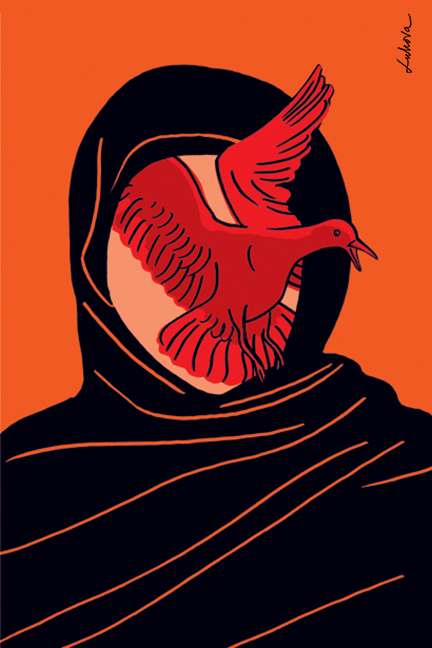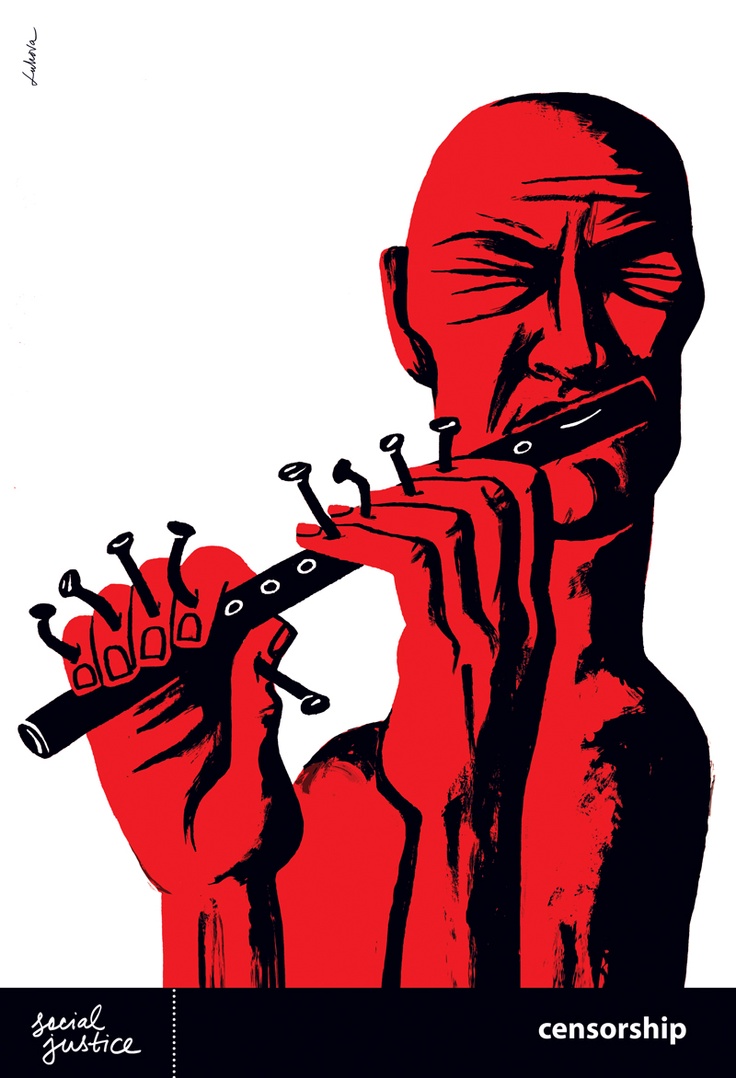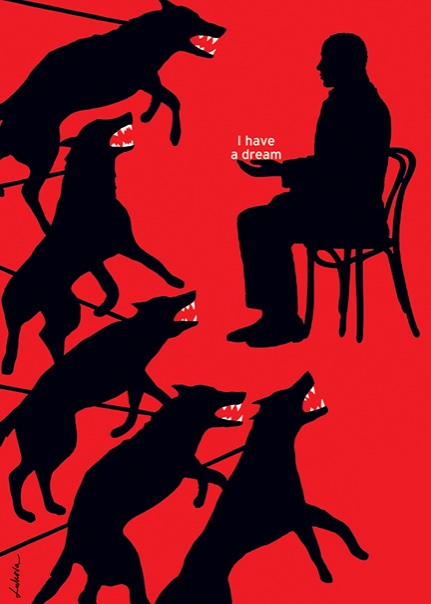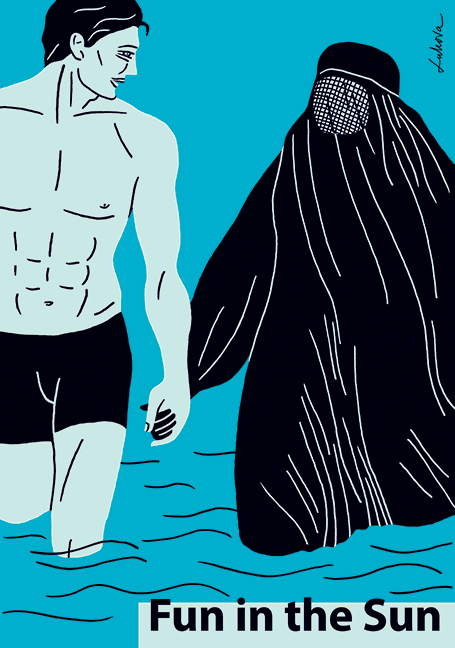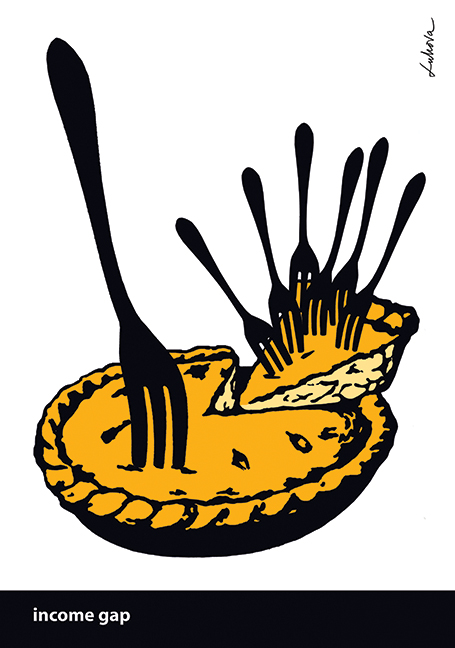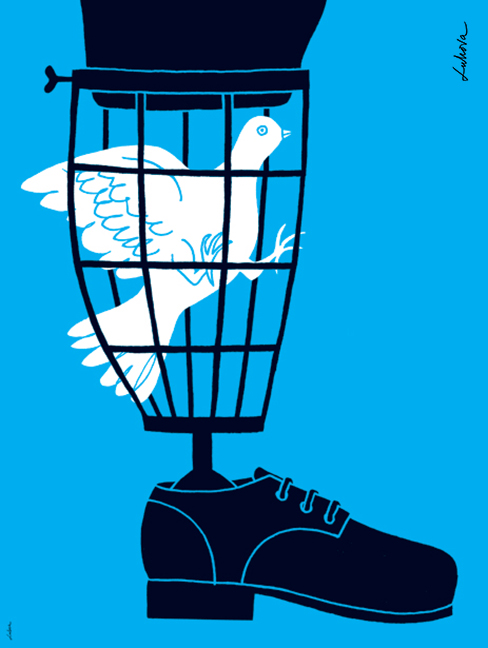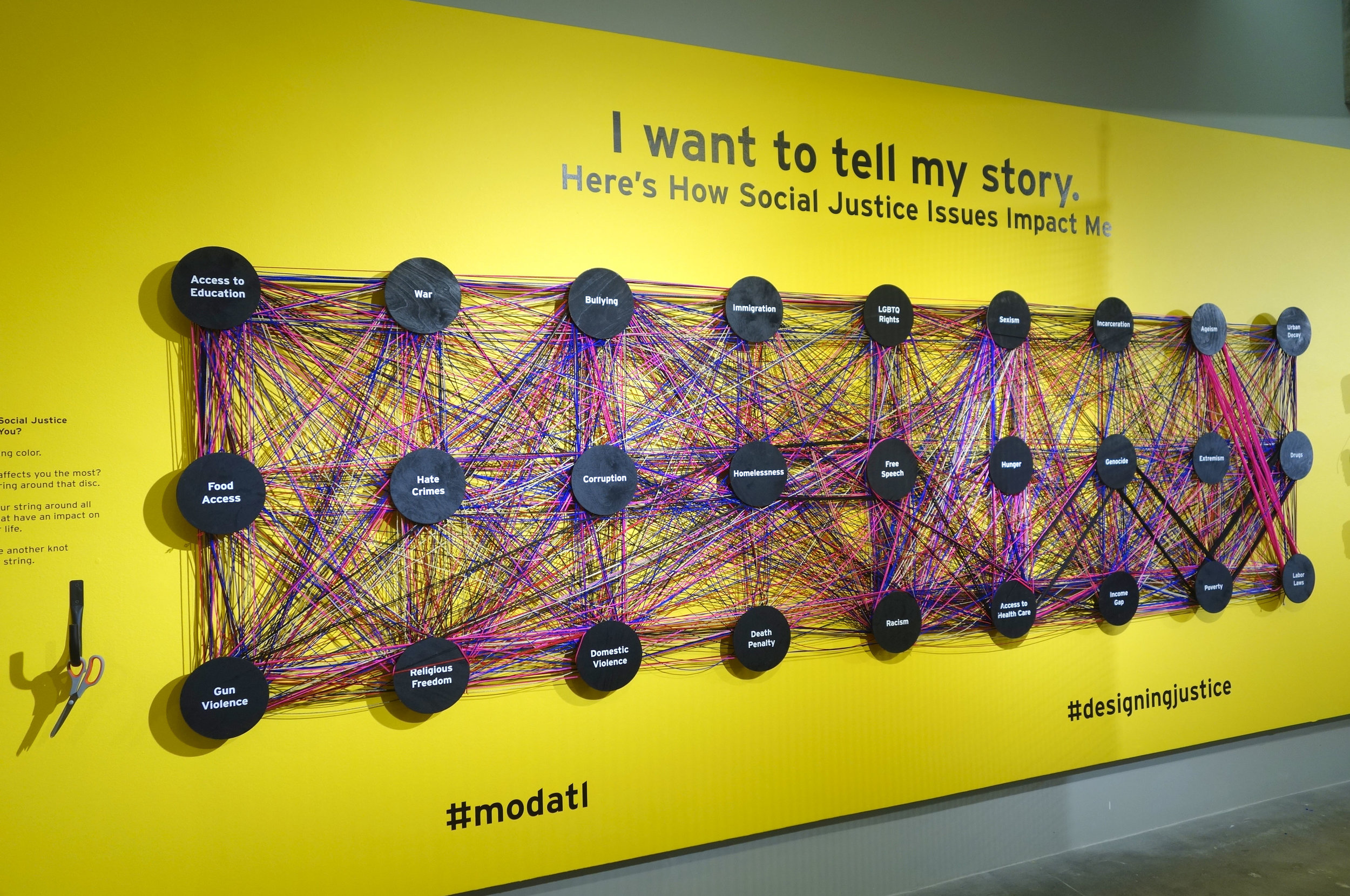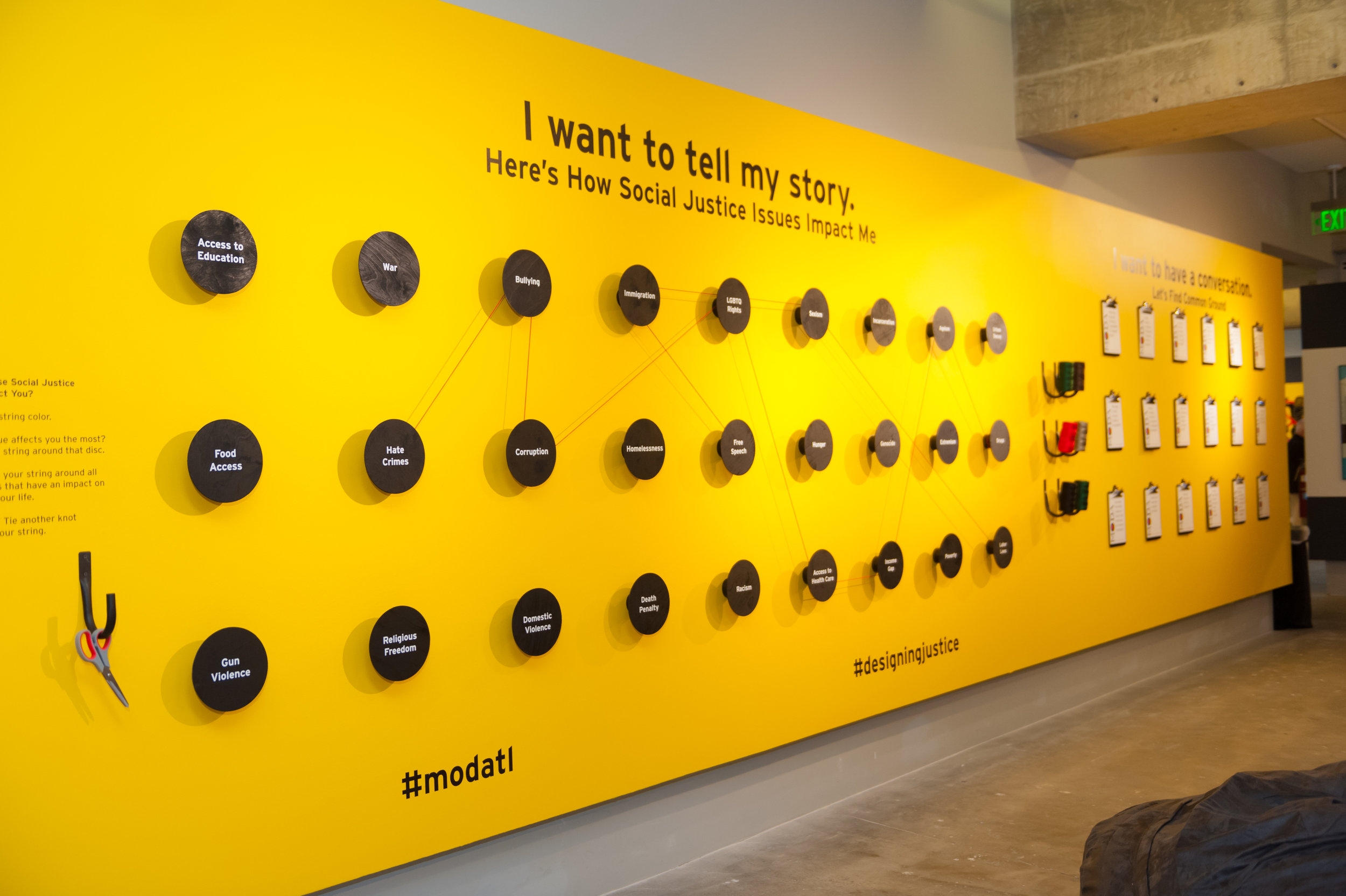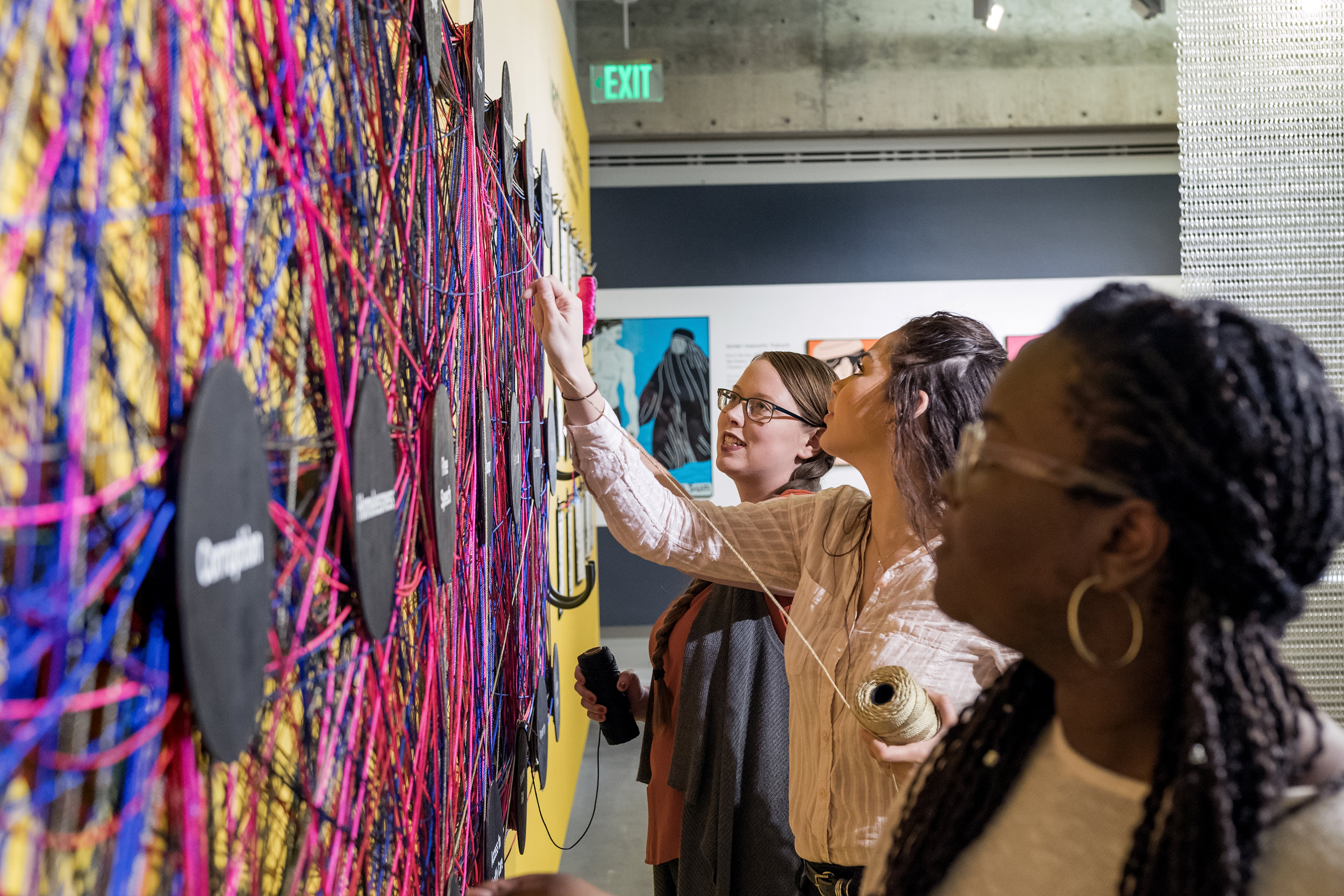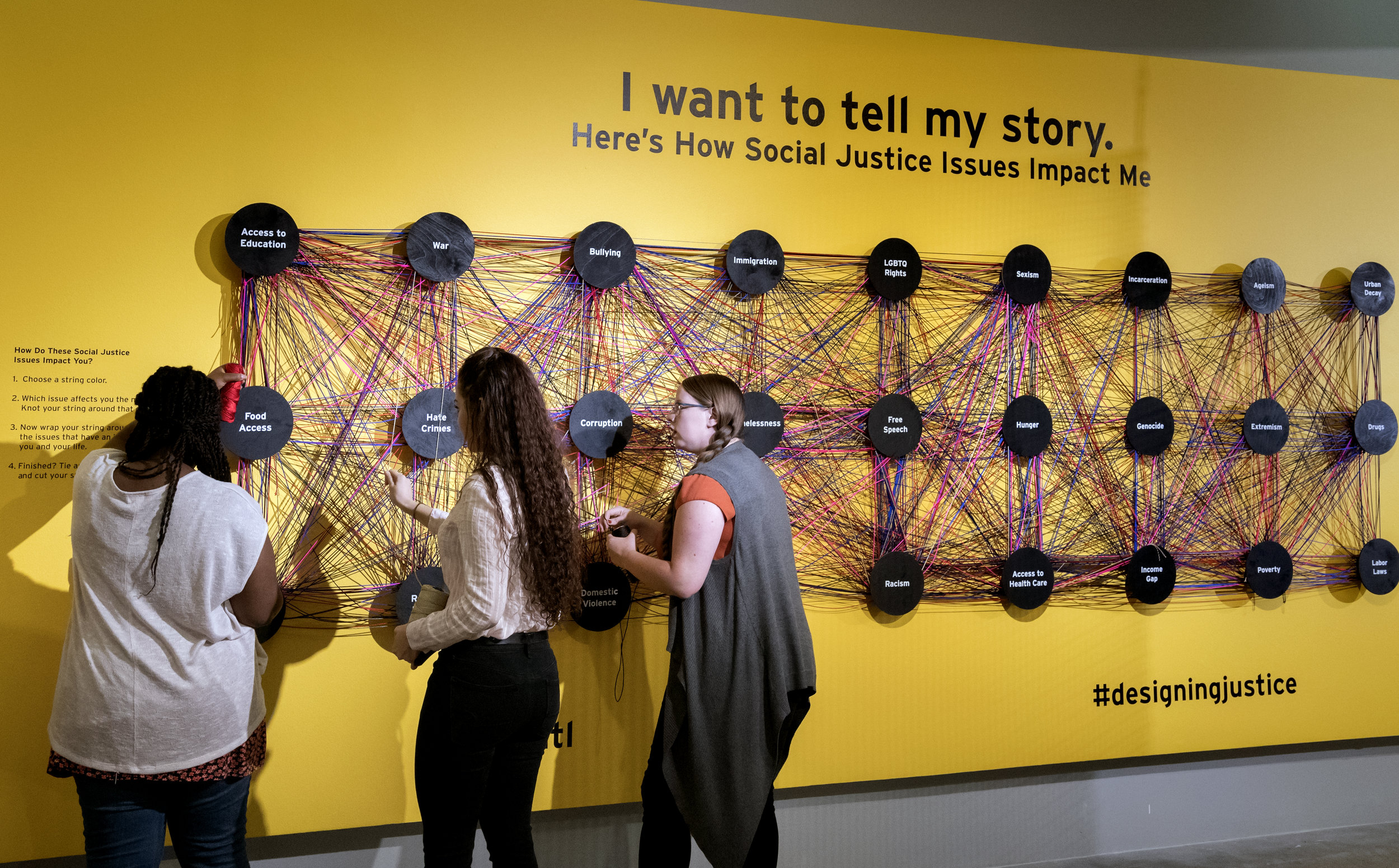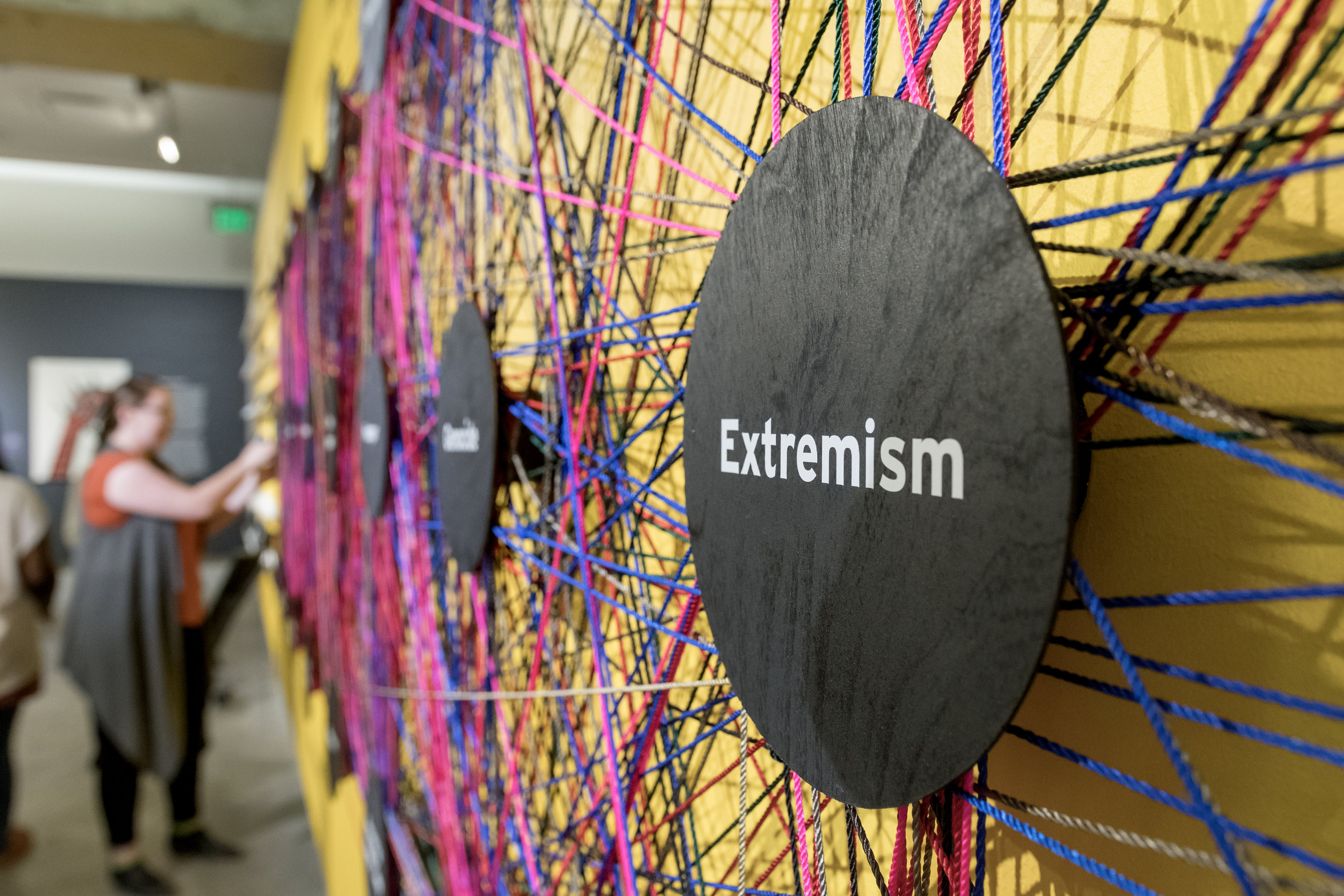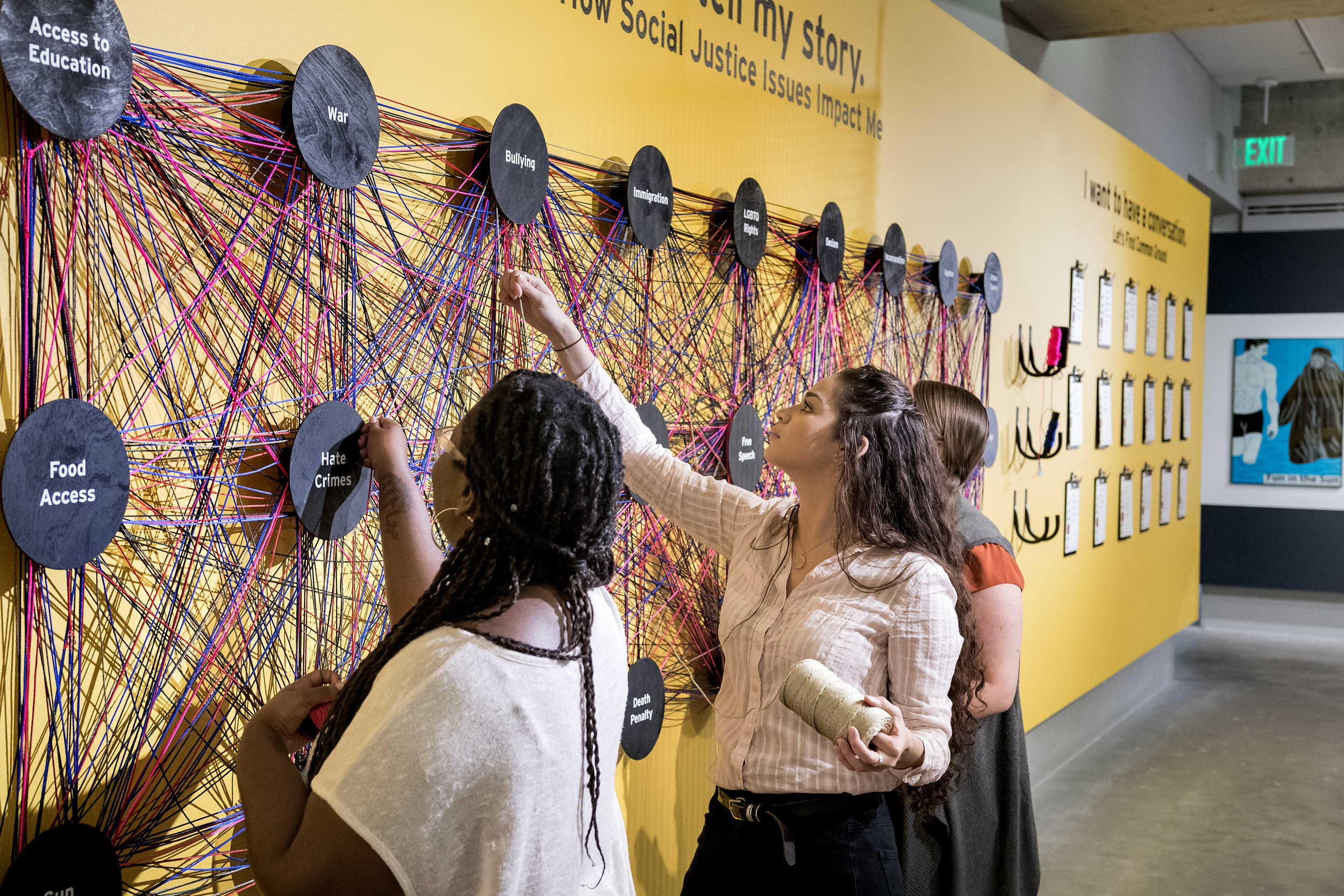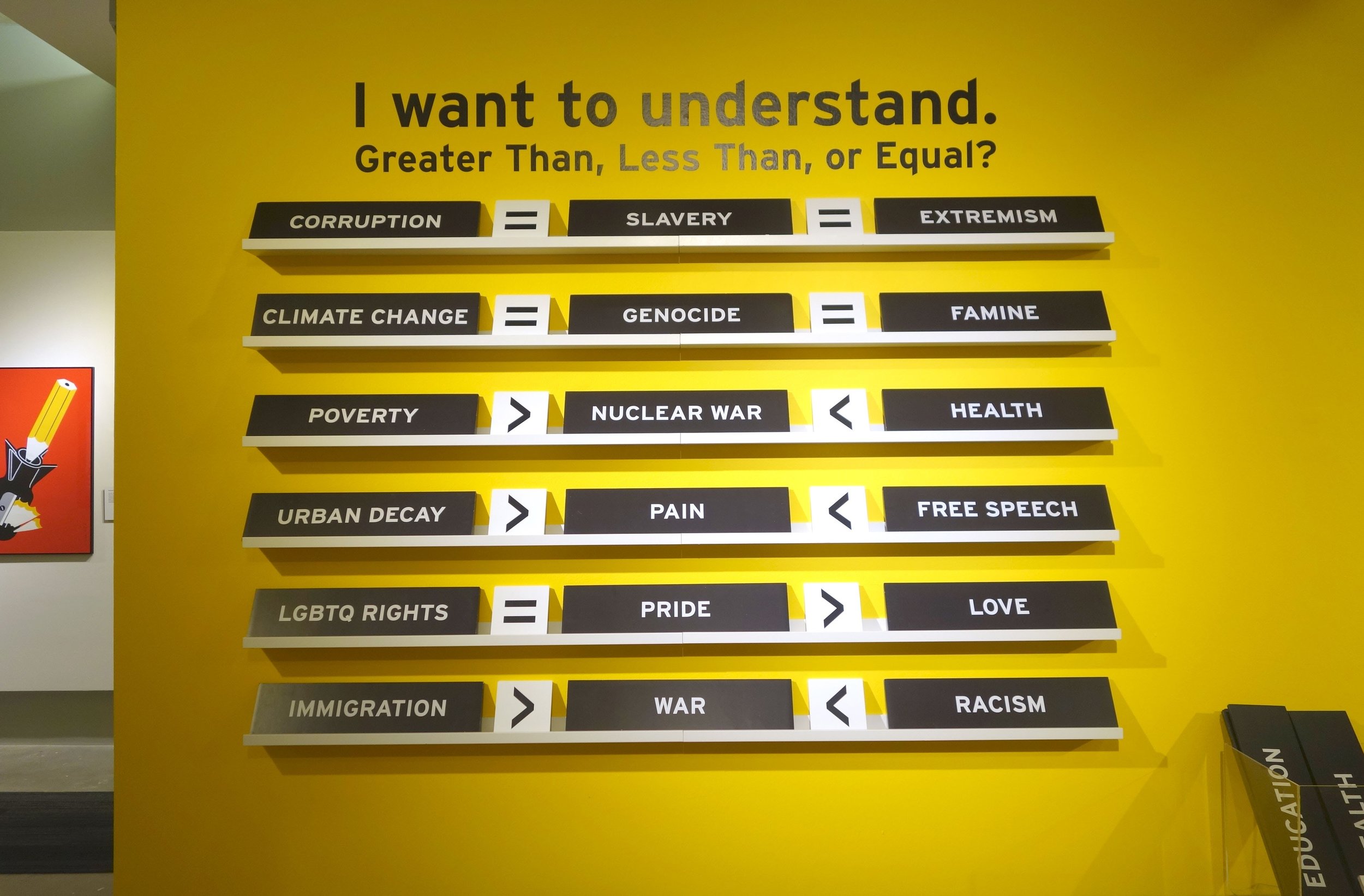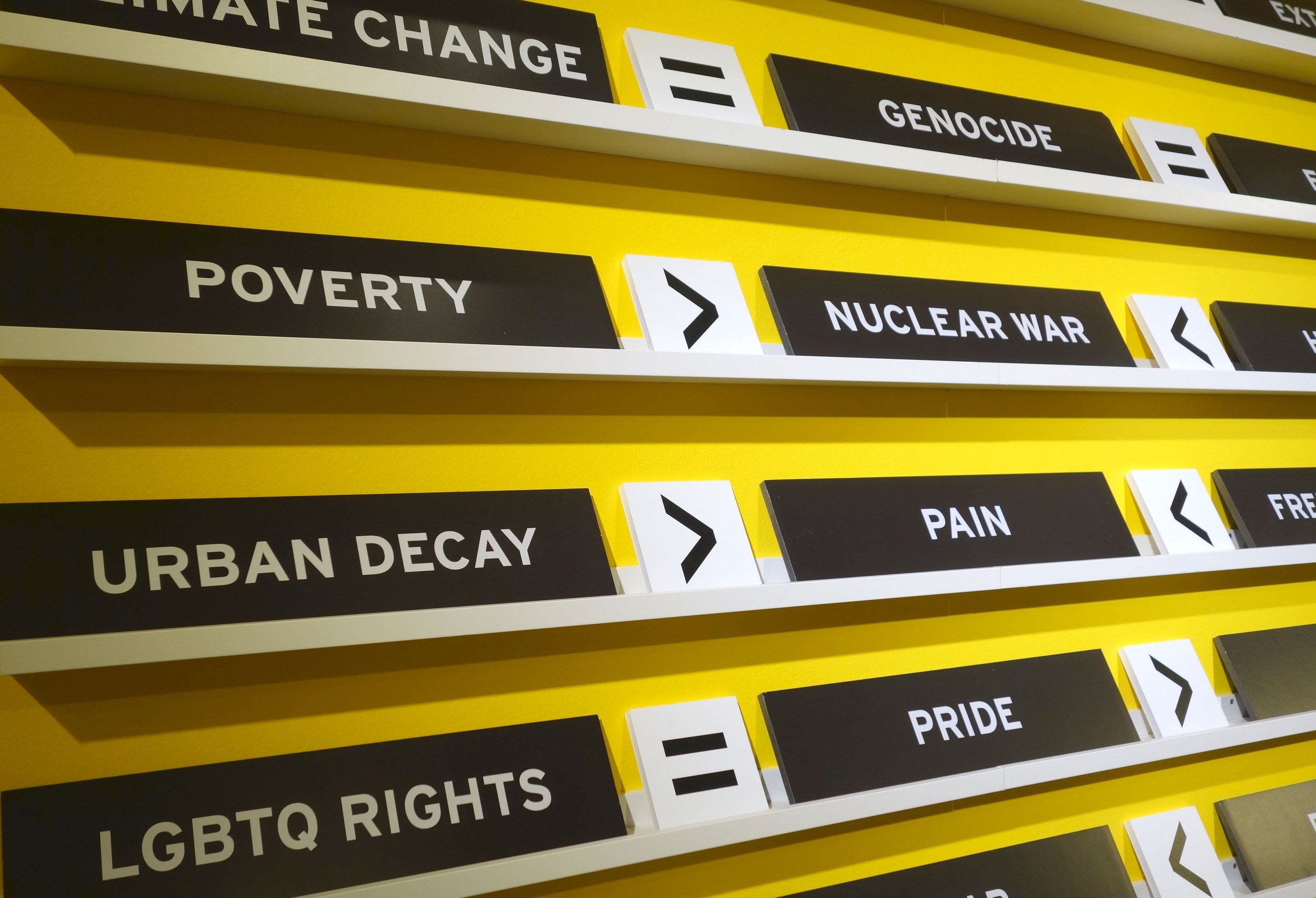Greater Than, Less Than, or Equal?
MODA's recent exhibition, Luba Lukova: Designing Justice (June 4 - September 3, 2017), featured 50+ powerful and brilliant posters by designer and artist Luba Lukova, whose work addresses the critical social justice issues that currently dominate our polarized news cycle, including health care, women’s rights, LGBT rights, immigration, gentrification, and corporate corruption.
Born, raised, and educated in Bulgaria under the communist regime, Lukova immigrated to the United States in 1991 and established her studio in New York City. She is known for her mastery of line, color, and form and for her ability to transform recognizable images and objects into powerful symbols that convey potent messages. Her posters arouse empathy and provoke conversation across traditional social and political divisions. She works with the hope that her art can change the world, as she discussed in the online magazine Burnaway during the run of her show:
Art is a way to make people connect. It’s the great unifier. We are so divided in the US today. There is no one who could disagree. So why don’t we just agree that we have to fight these serious issues together? We have to feel empathy for each other. If you don’t feel empathy, then everything is meaningless because it means that progress depends on only a few people. If there is no empathy, human progress will not be possible—you see how many revolutions and movements in society are just about that, a huge number of people struggle. I feel empathy is the purpose of art.
In conceiving and designing Luba Lukova: Designing Justice, the MODA team was committed to creating in-gallery interactive activities that reflect Lukova's vision by helping museum visitors connect with social justice issues and build empathy for one another. While we design in-gallery interactives for almost every exhibition we mount at the museum — it's one of the most challenging things we do — in this case they proved to be extremely effective, engaging almost every patron in one way or another.
Specifically, we designed three activities meant to inspire three different kinds of engagement. All three interactives occupied a single long wall in our side gallery: one section of the wall asked visitors to think and talk about difficult questions related to social justice, another encouraged museum visitors to record the impact of social injustices on their lives, and the third challenged patrons to weigh the relative importance of the extremely challenging issues. We designed these activities in such a way as to be engaging for individuals who might undertake them on their own, but we also tried to make them provocative enough to provoke spontaneous conversation.
Photo by Susan Sanders.
I Want to Have a Conversation
Titled "I want to have a conversation. Let's find common ground," the simplest of the interactive activities took the form of 18 clipboards hung in a grid on the wall. On each clipboard were sheets of paper printed with challenging questions about topics that bear on issues of social justice, such as:
- How are prejudice and bias created?
- How can the work of designers impact social justice?
- How can we understand the perspectives and experiences of others?
- How can the arts serve as a vehicle for social change?
- How do we as individuals develop our values and beliefs?
- What does it mean to design justice?
Most individuals responded to these prompts in writing, often in long and considered answers such as those shown below. Initially, we hoped that visitors might remove a clipboard from the wall, sit down at tables and chairs in the gallery, and have a conversation with a friend or fellow visitor. This happened on occasion, but we found that this section of the wall more often provoked introspection and written responses.
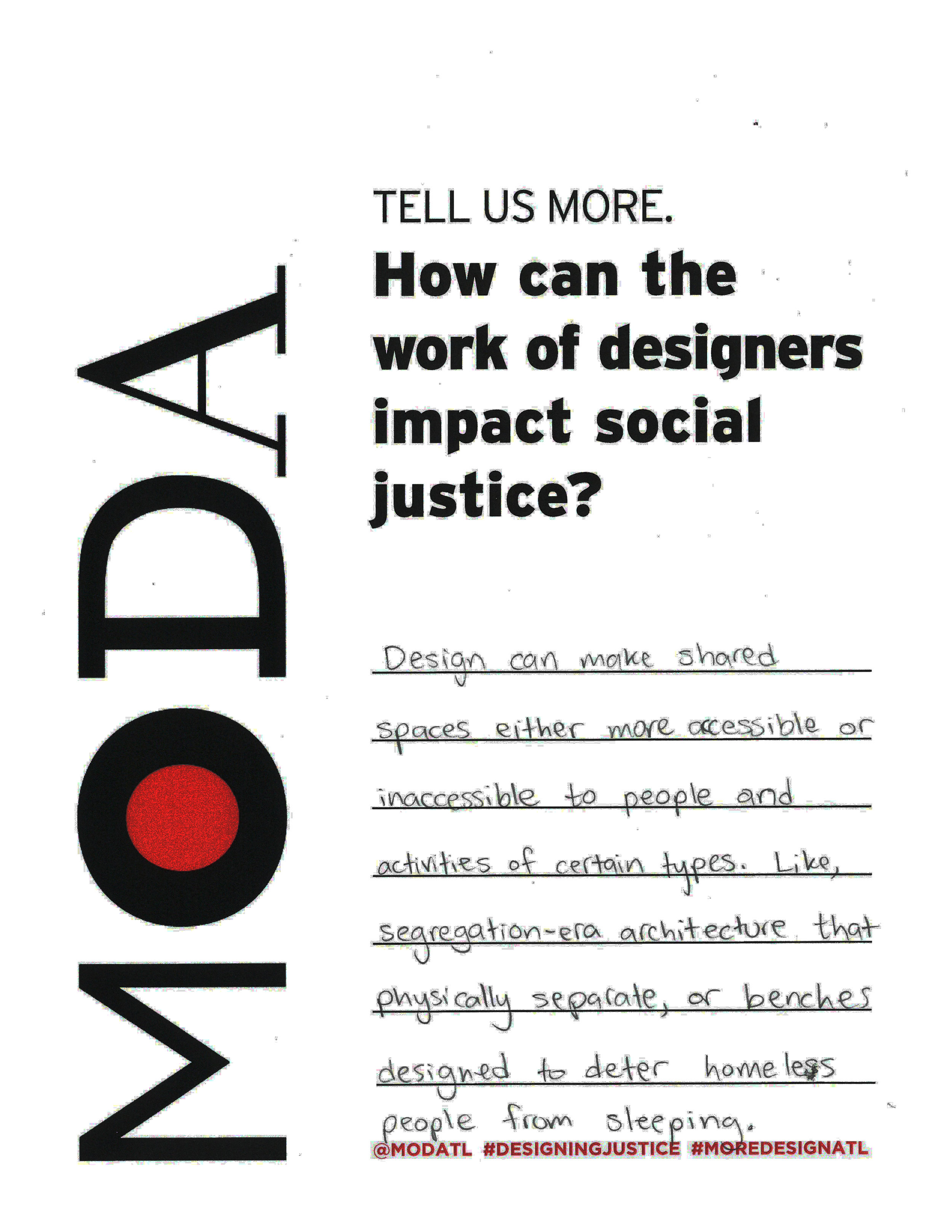

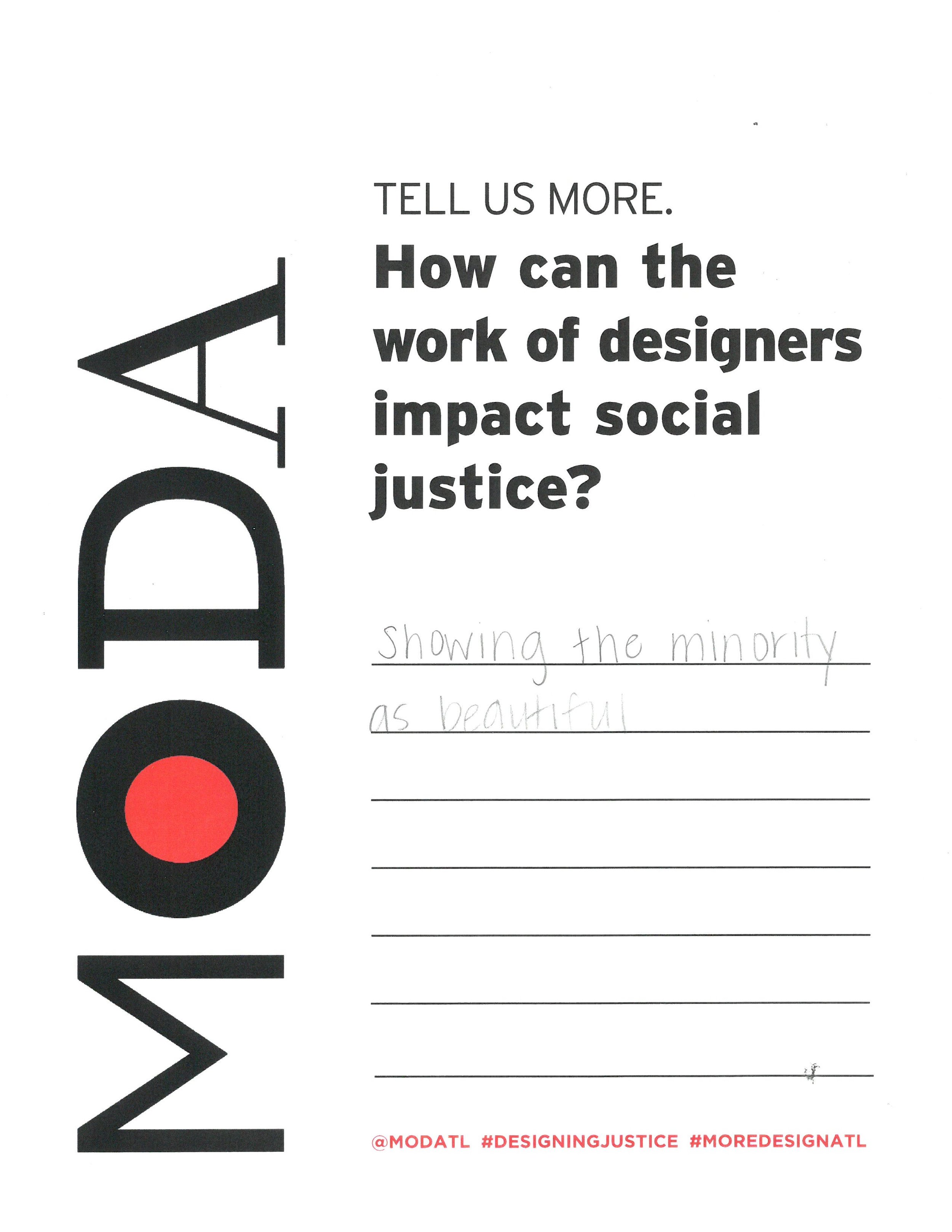
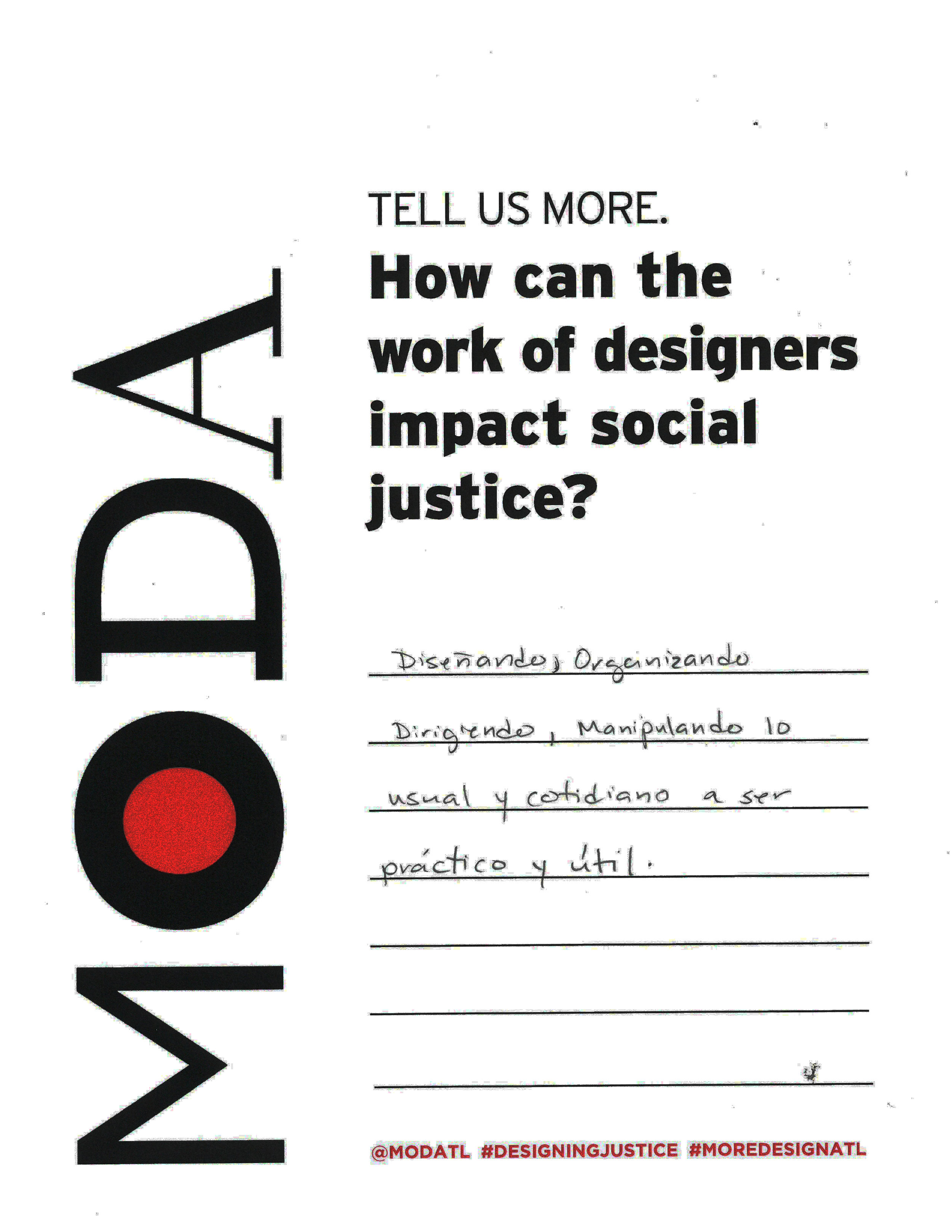
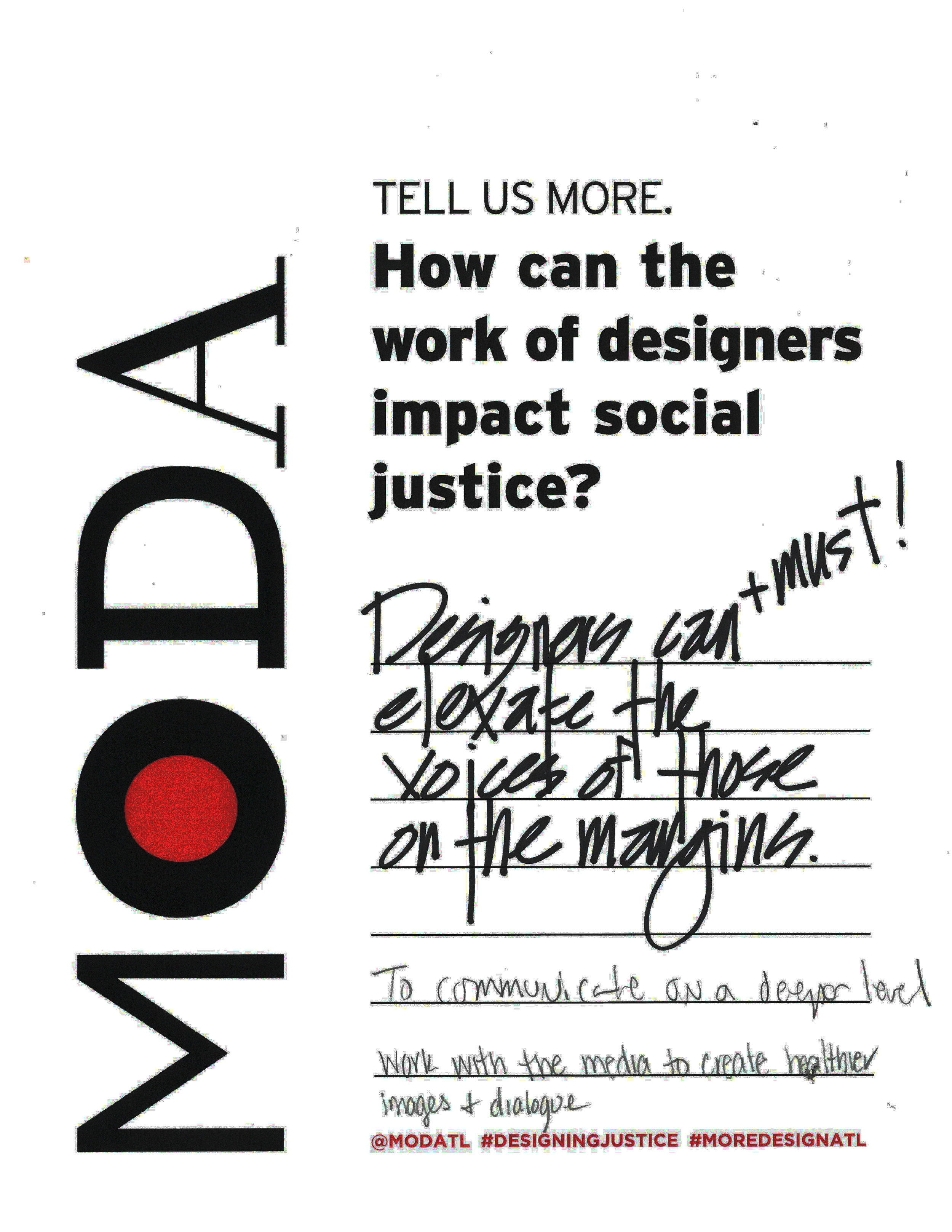
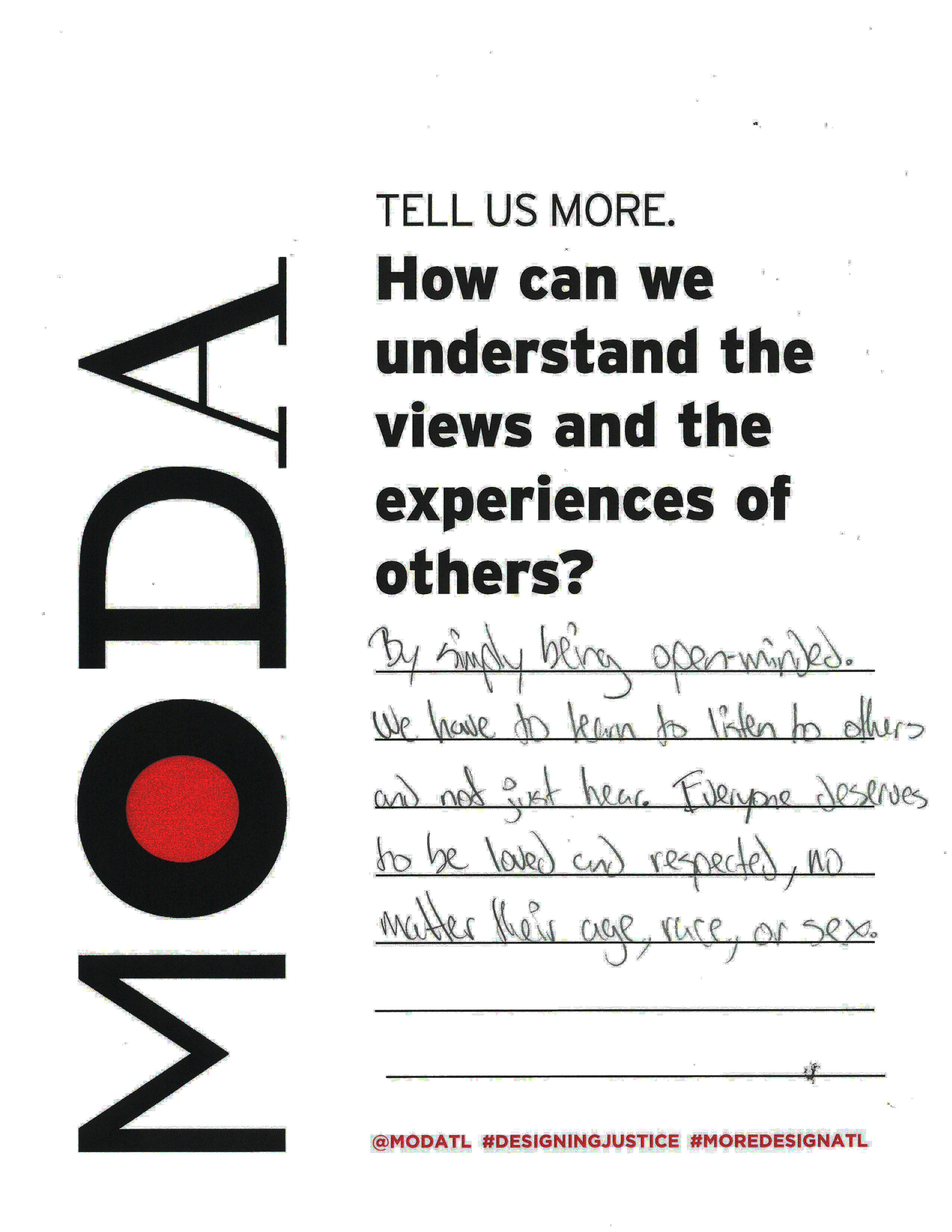
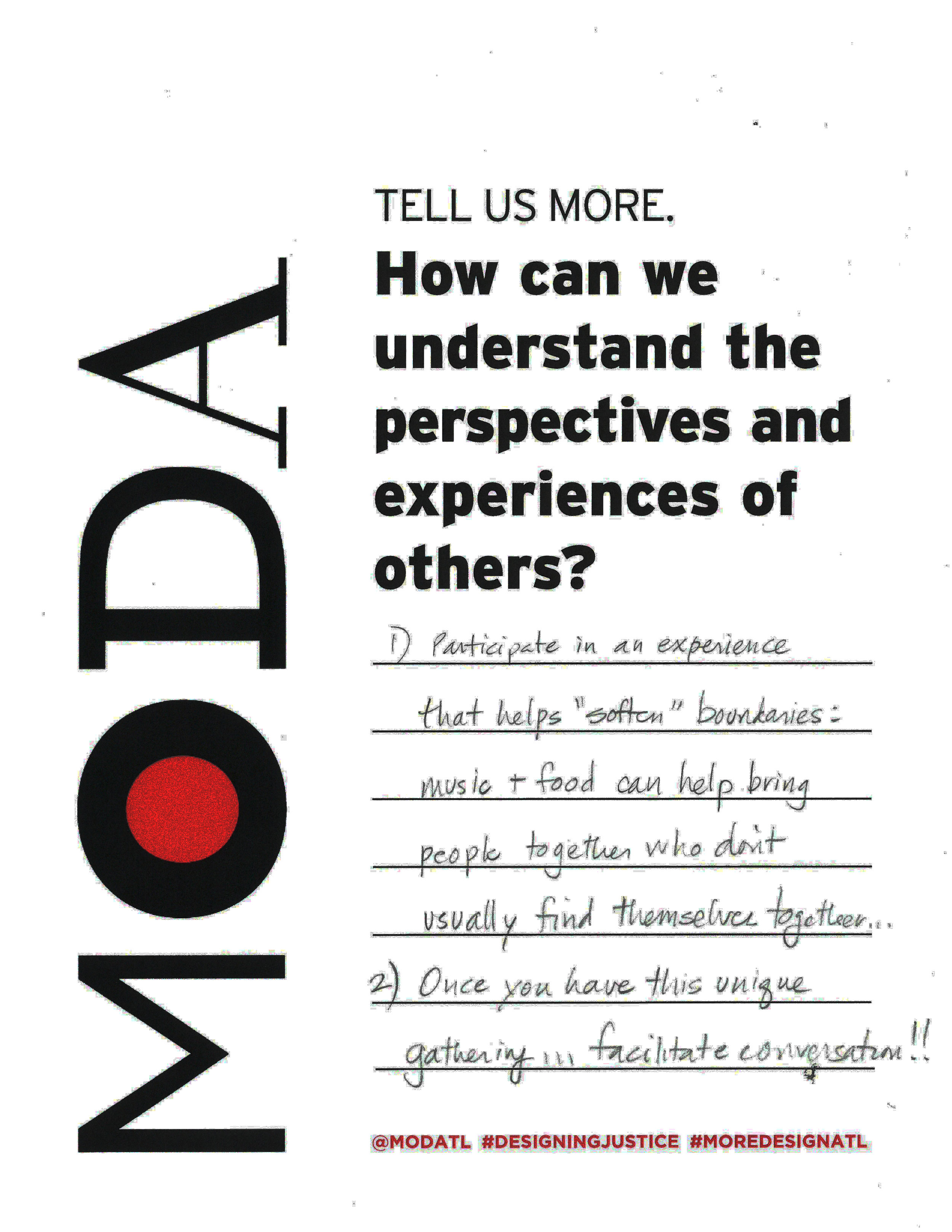
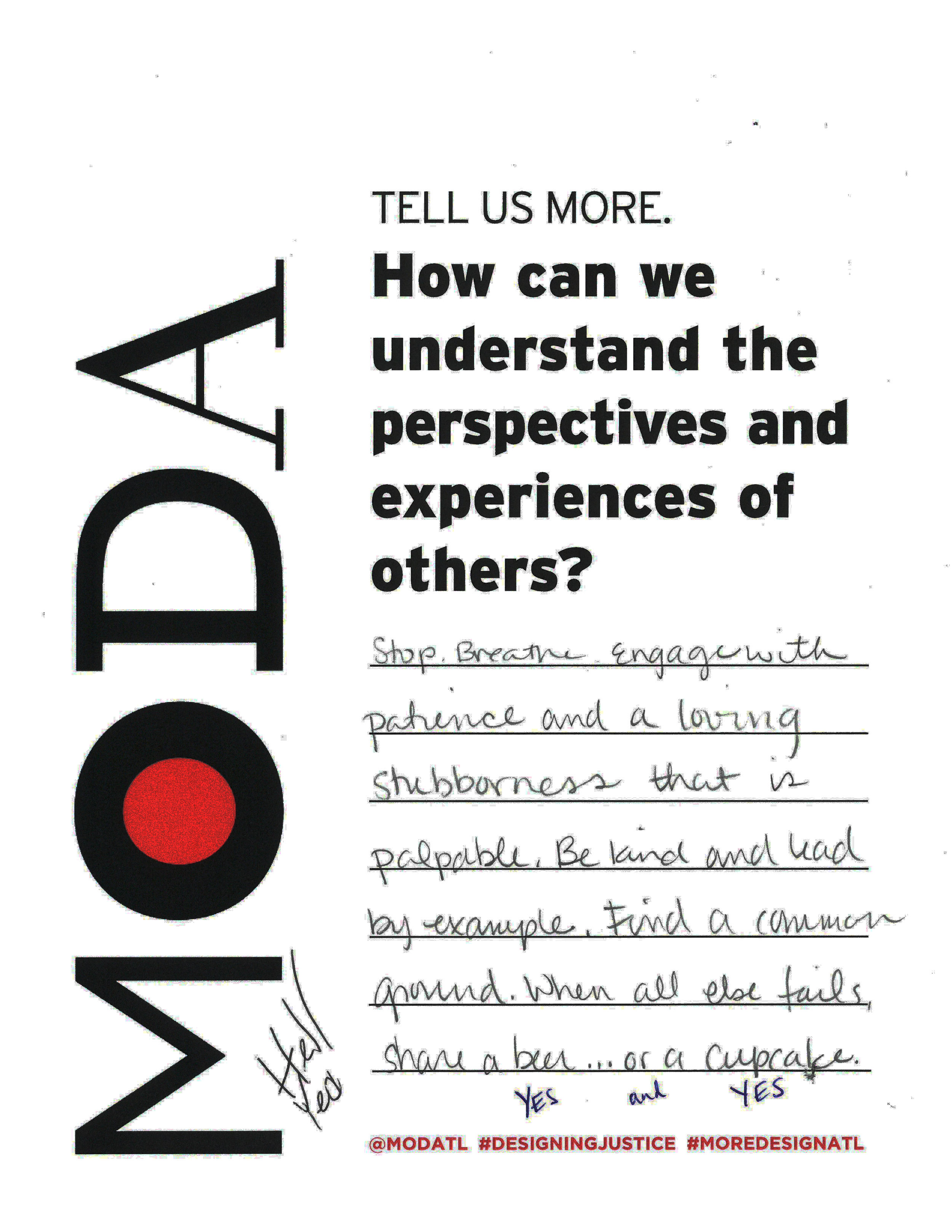
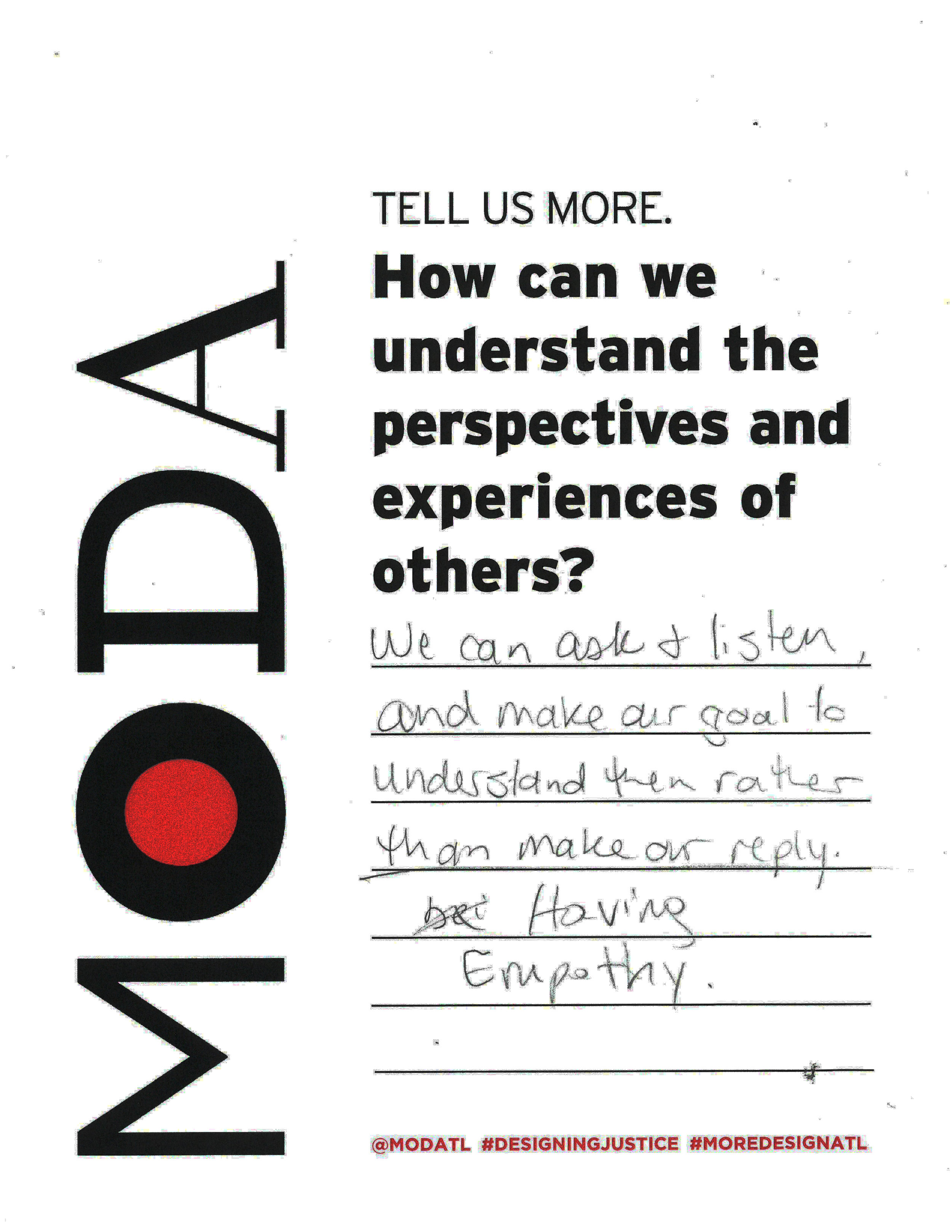
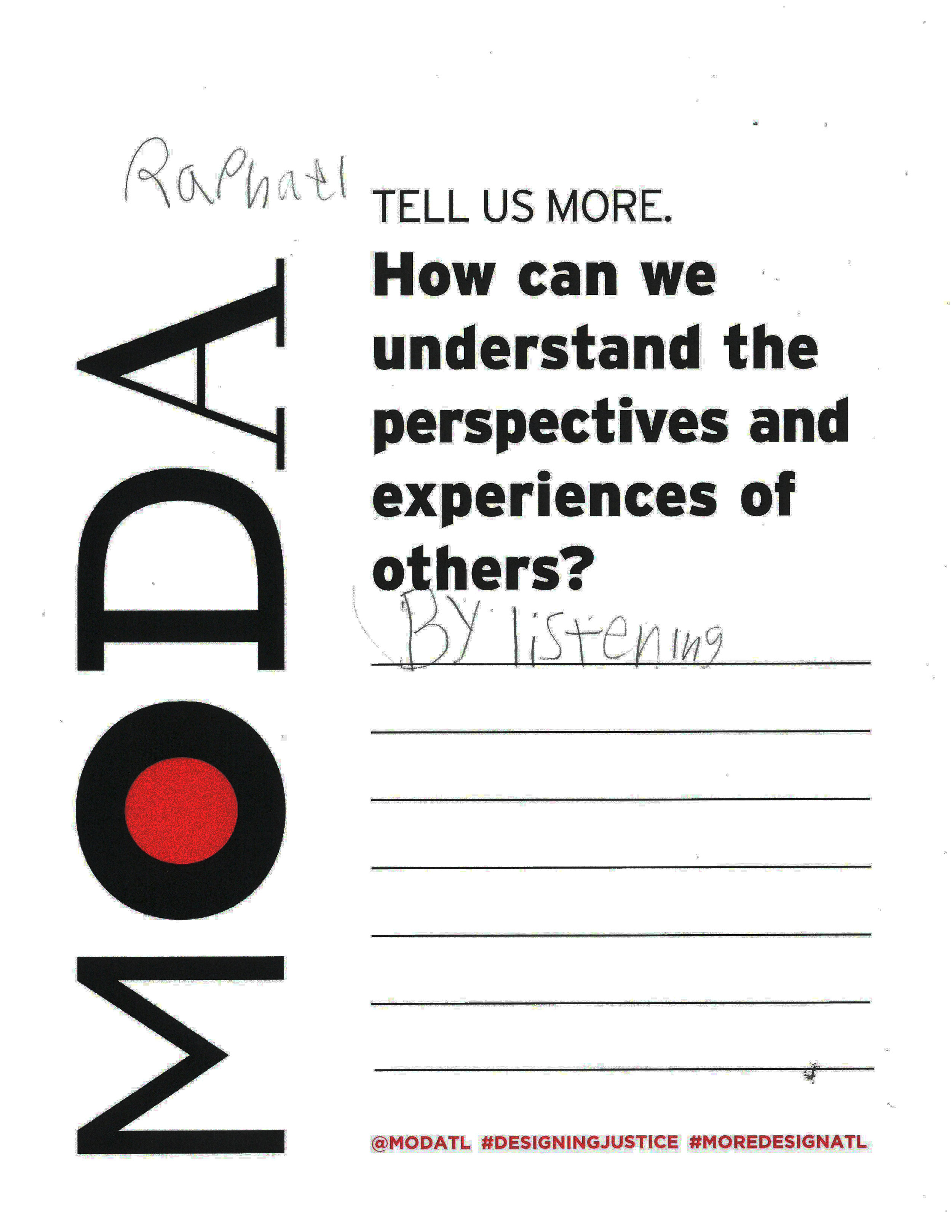


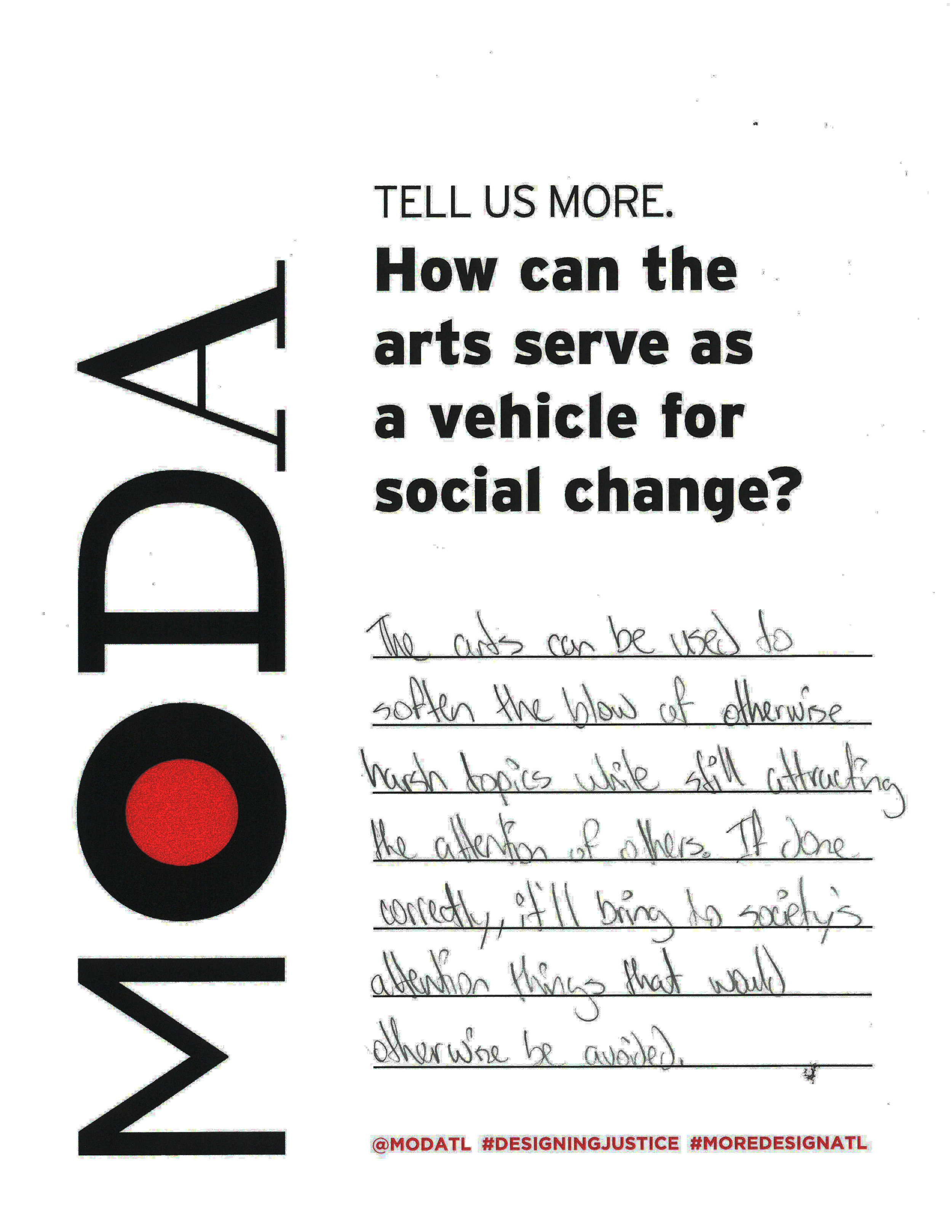
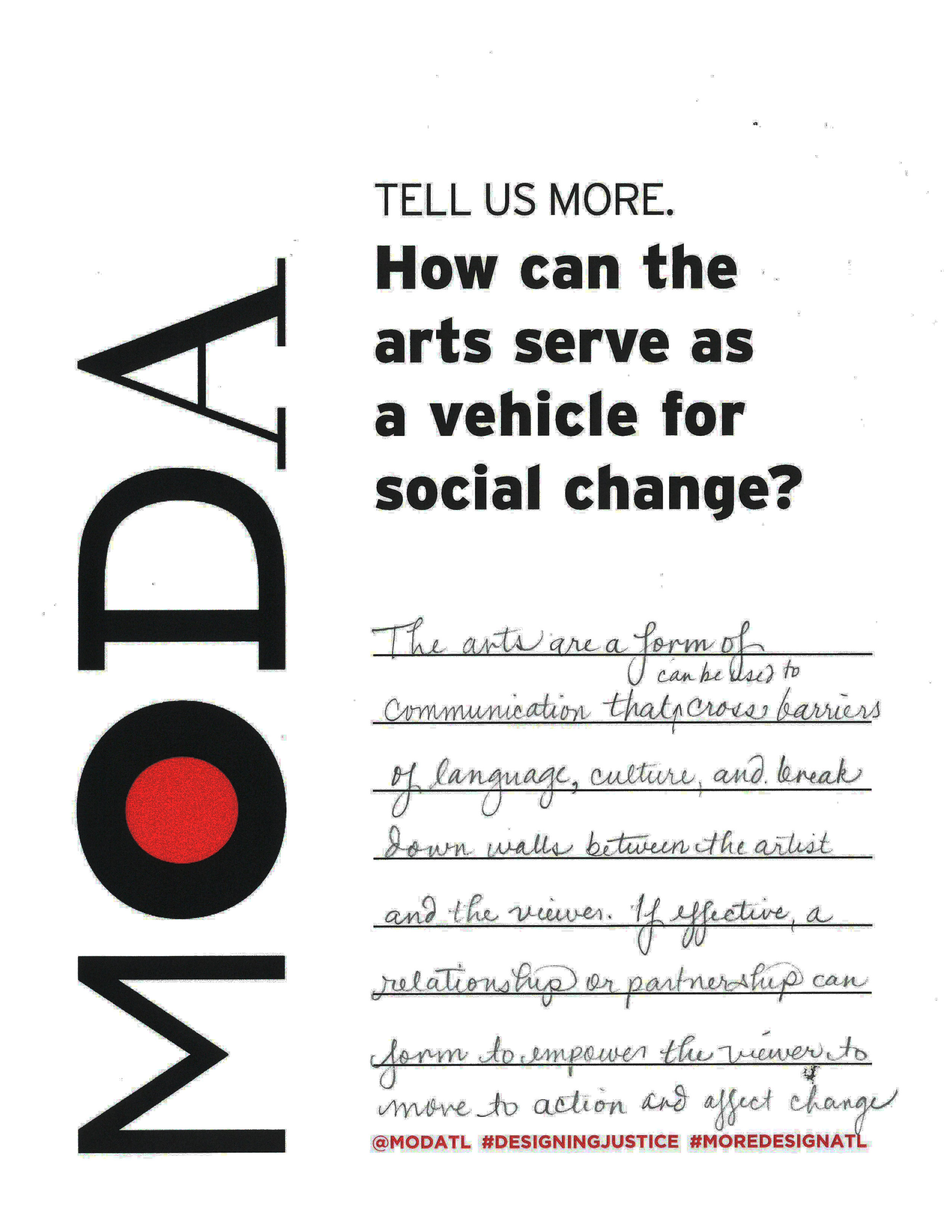
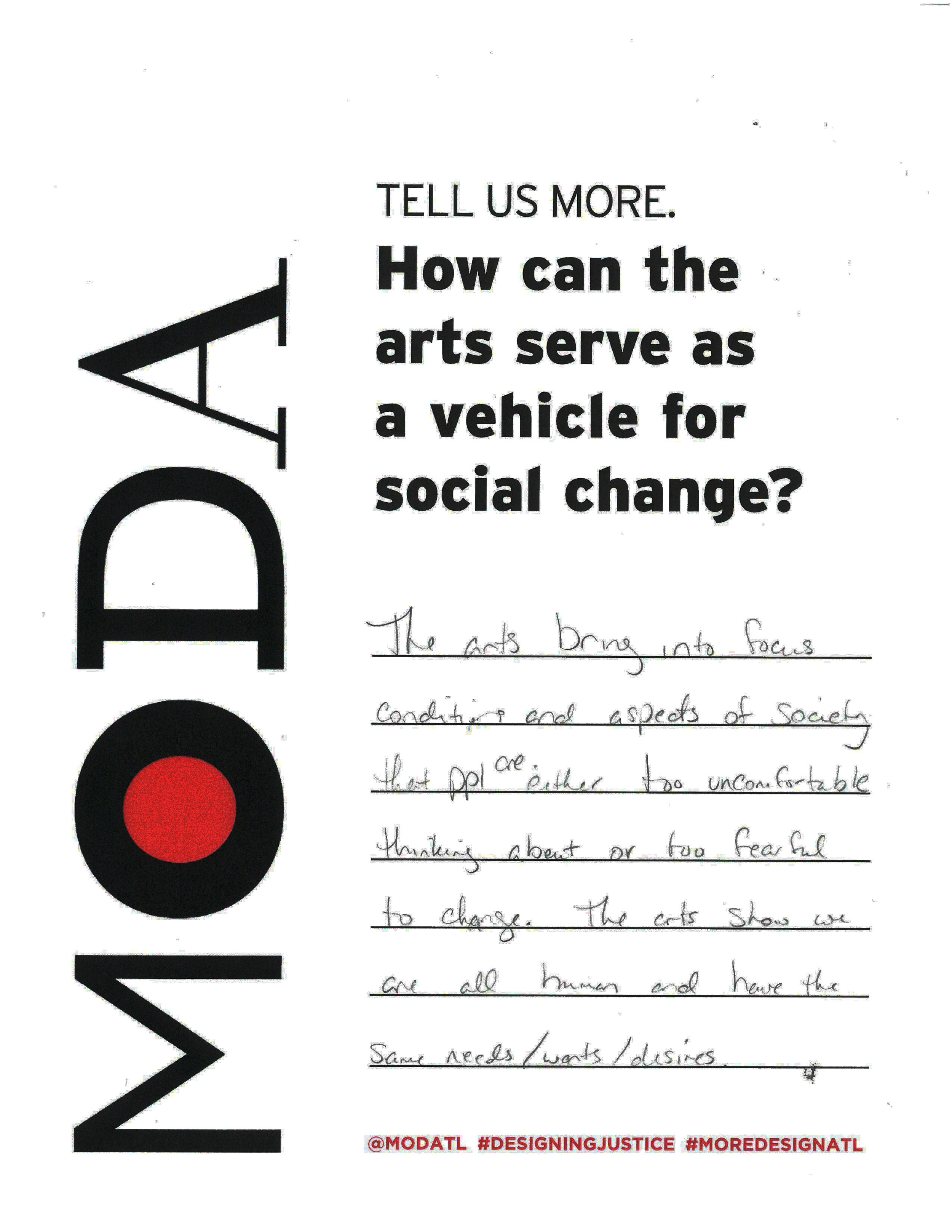
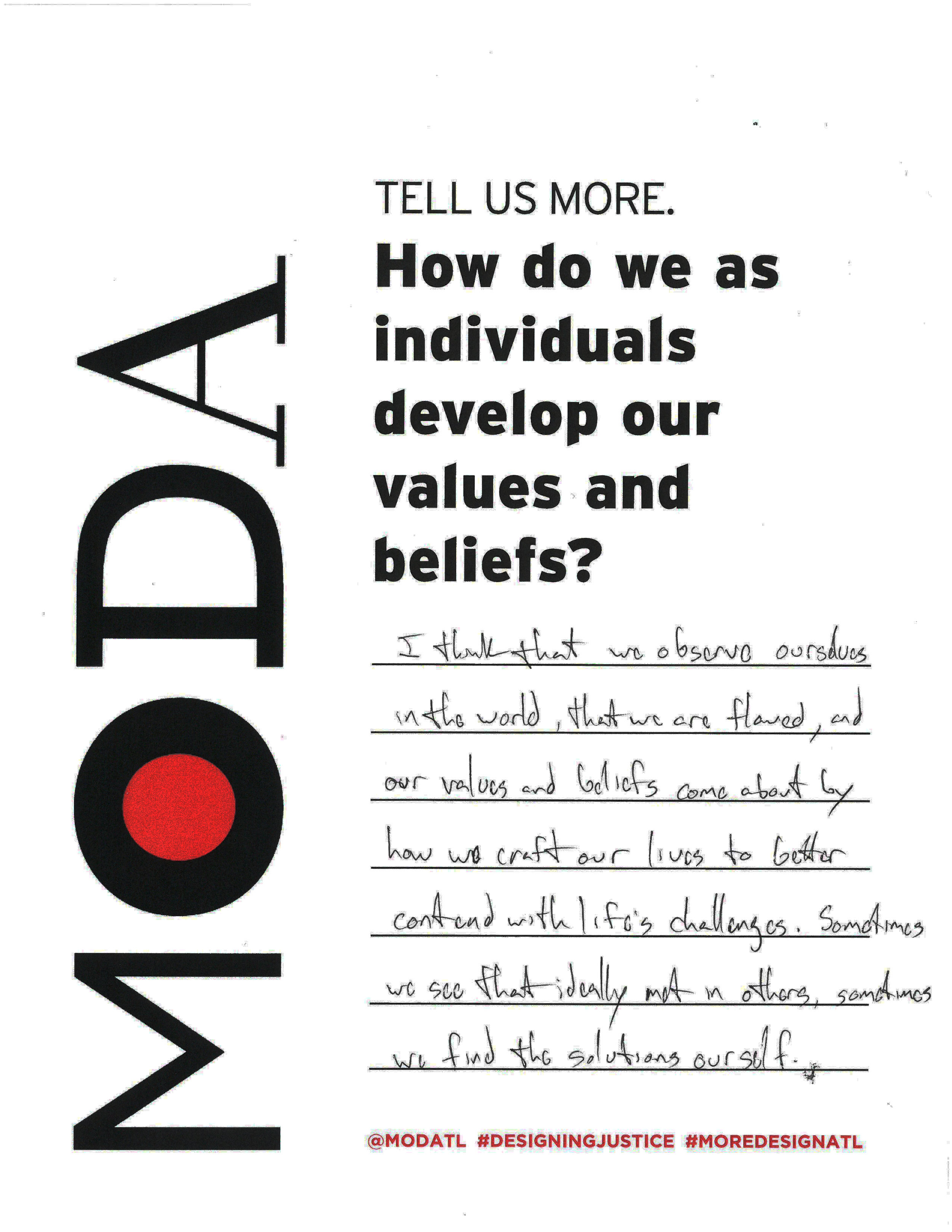
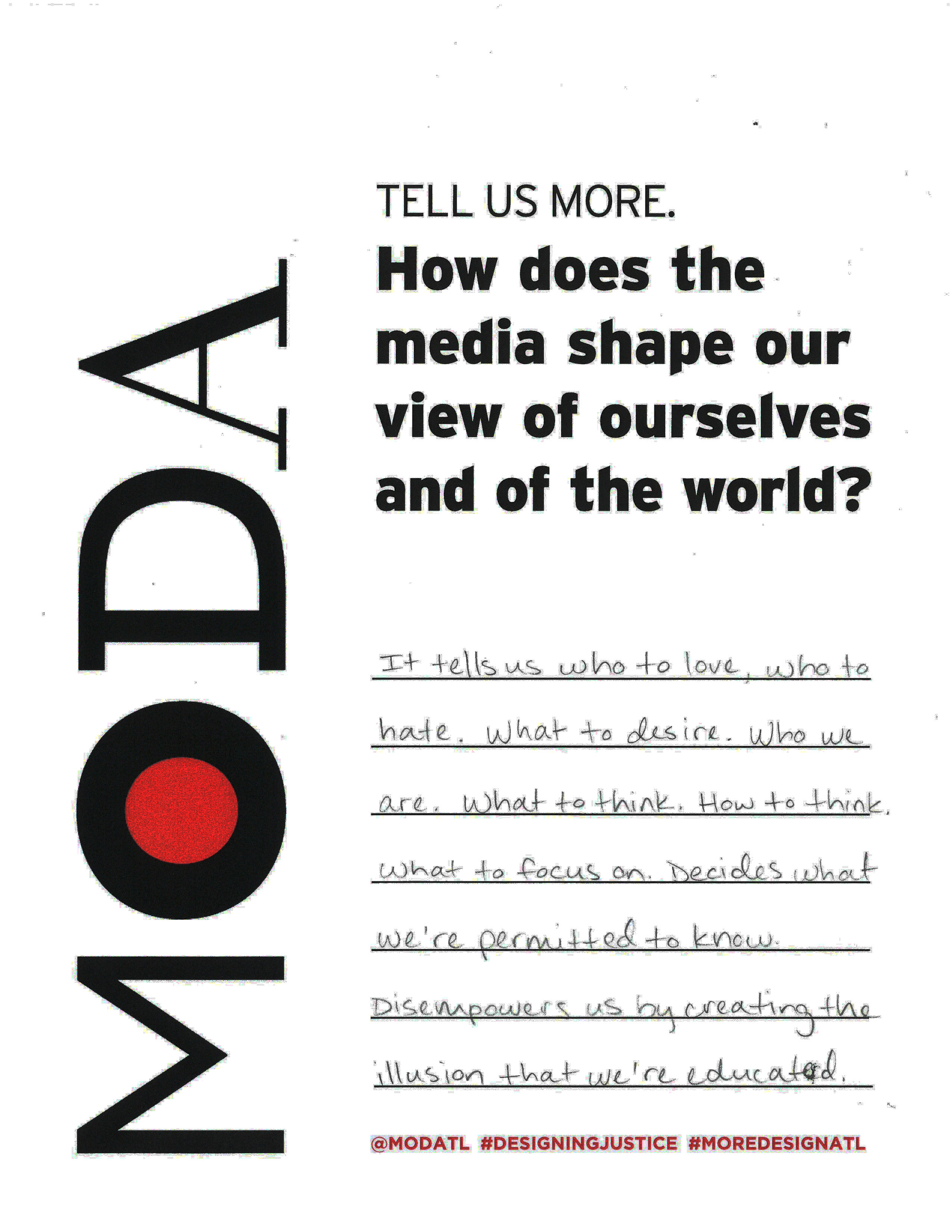
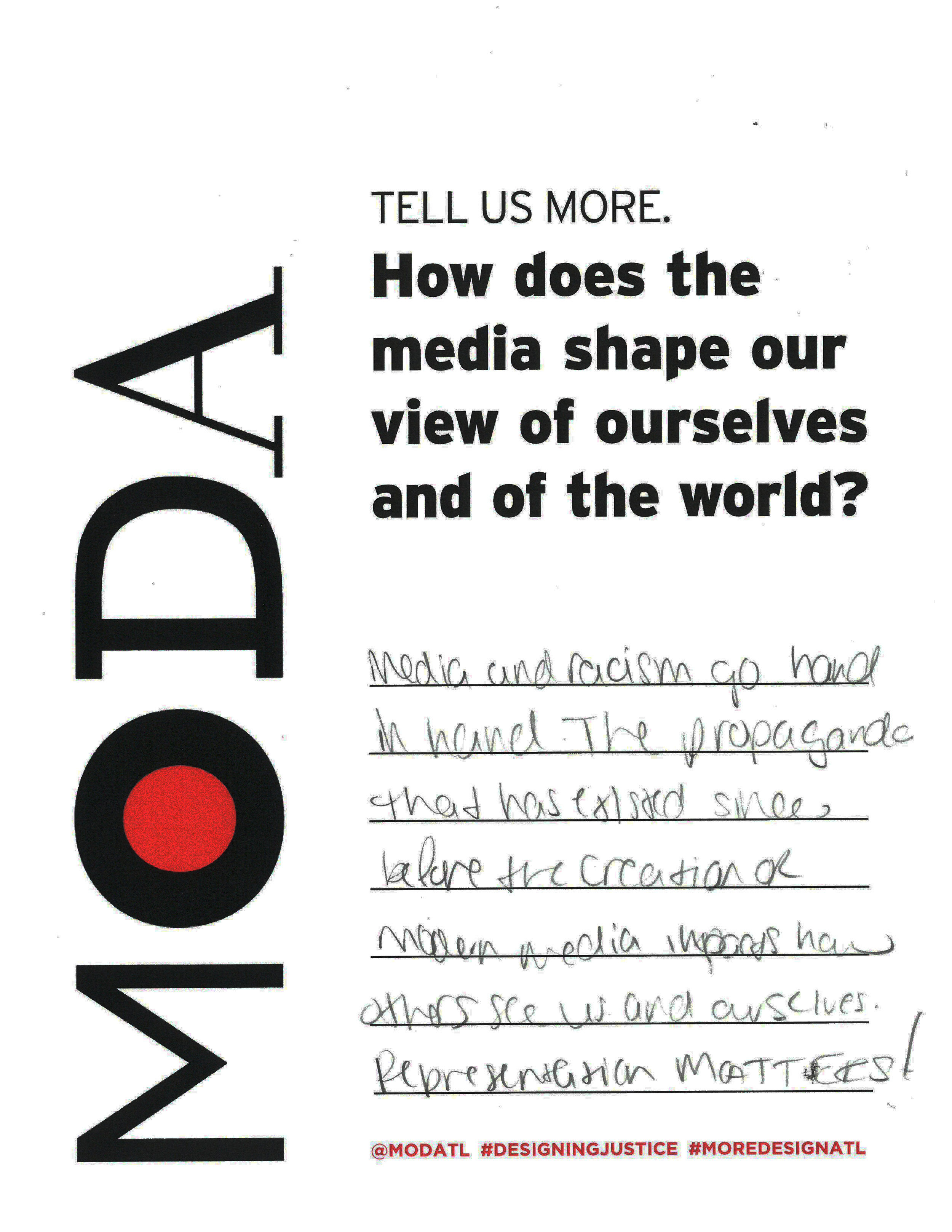
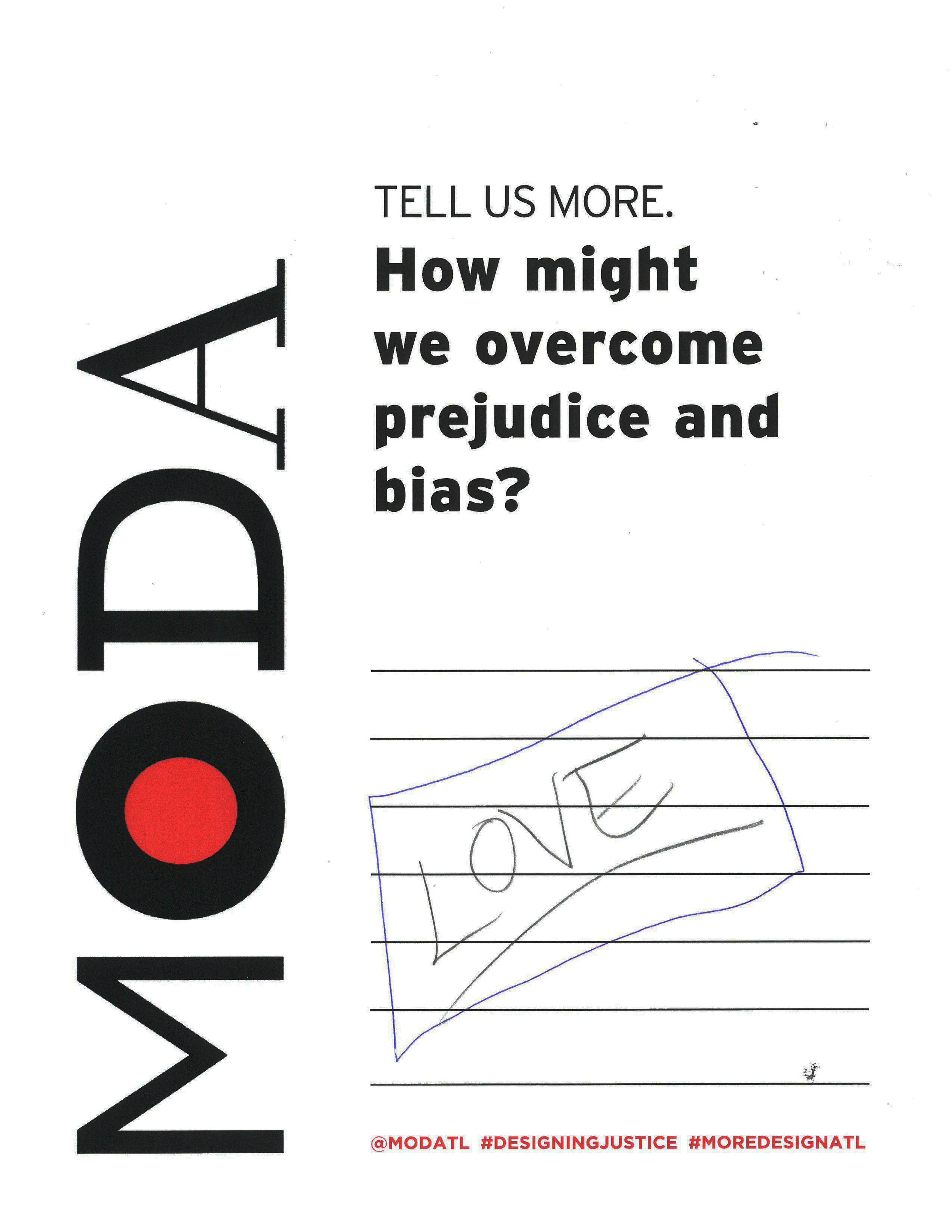
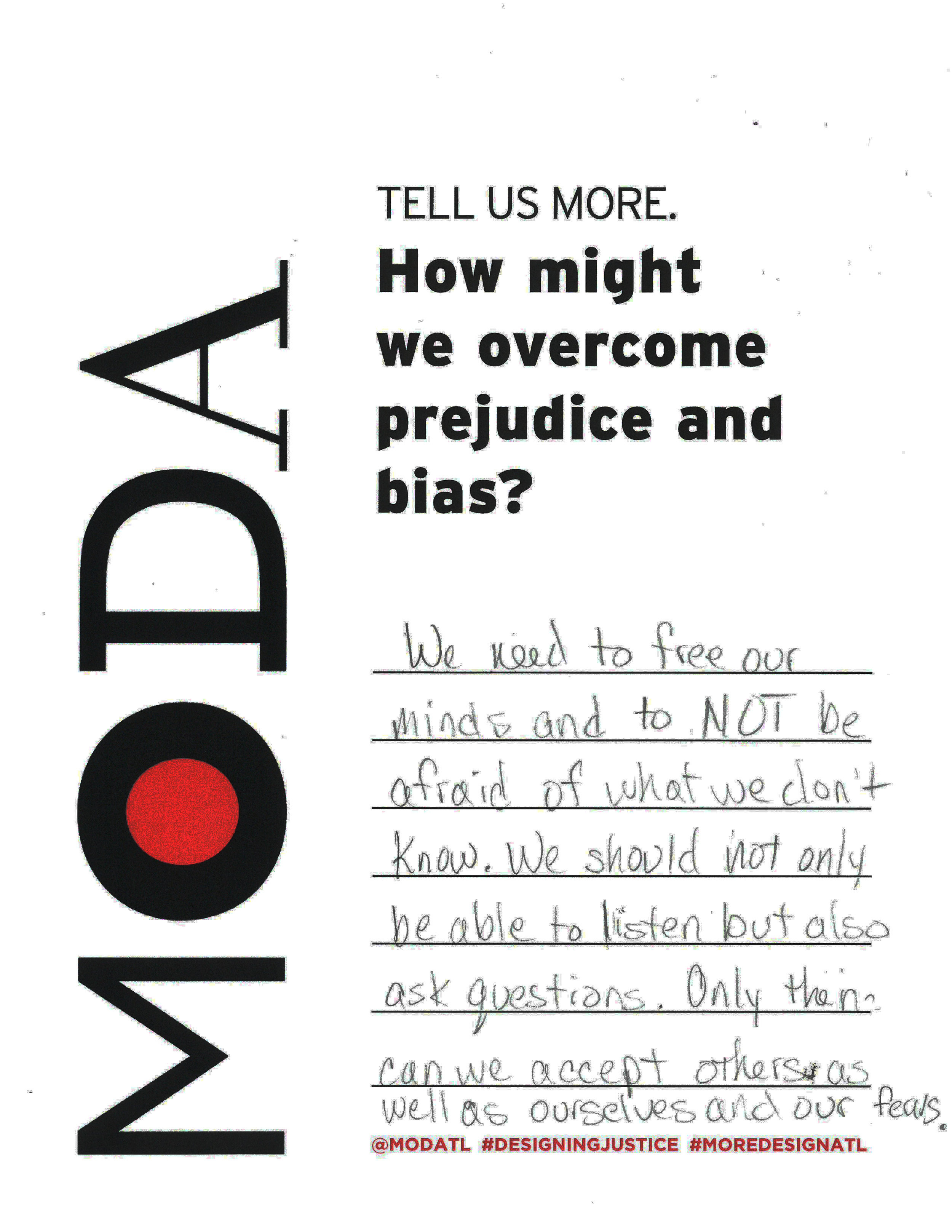
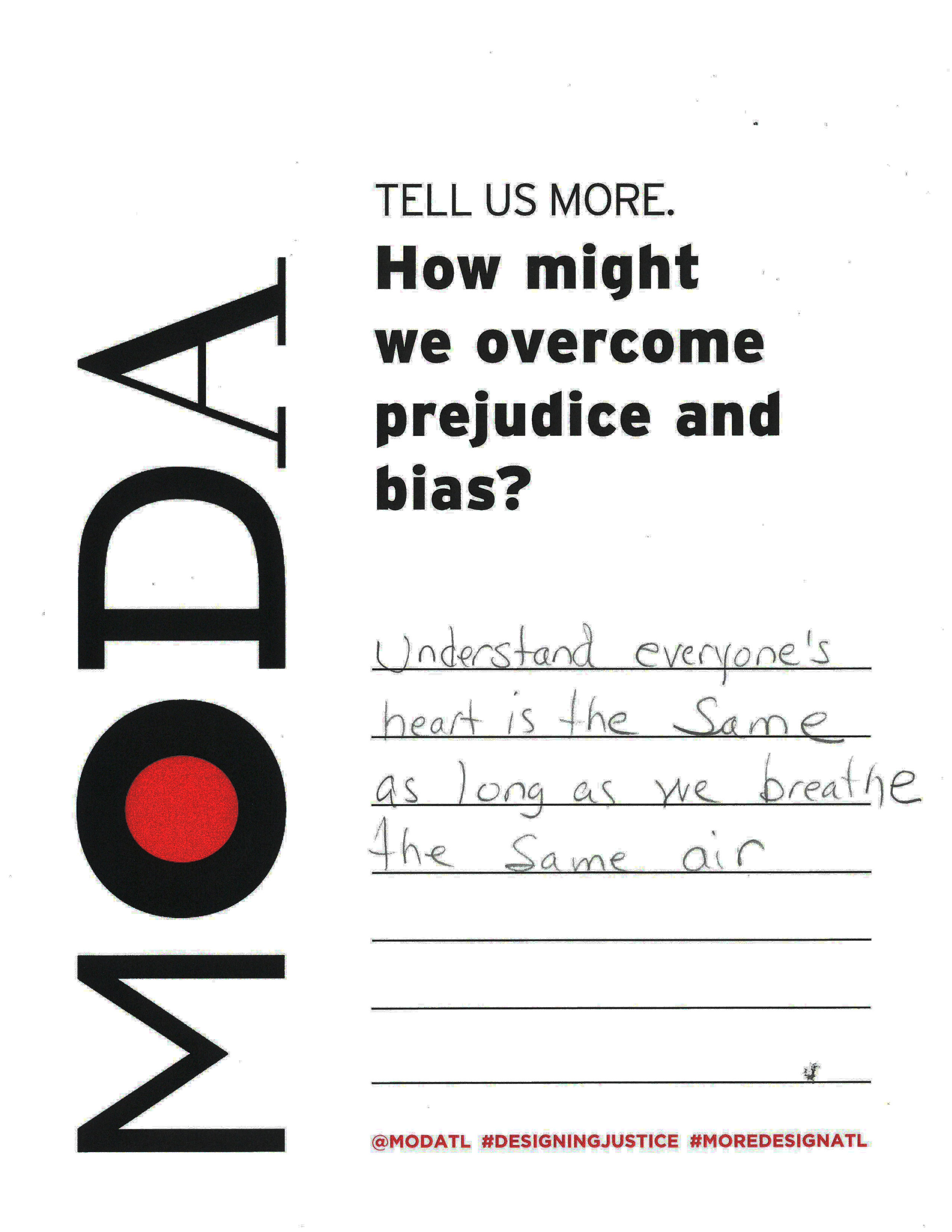
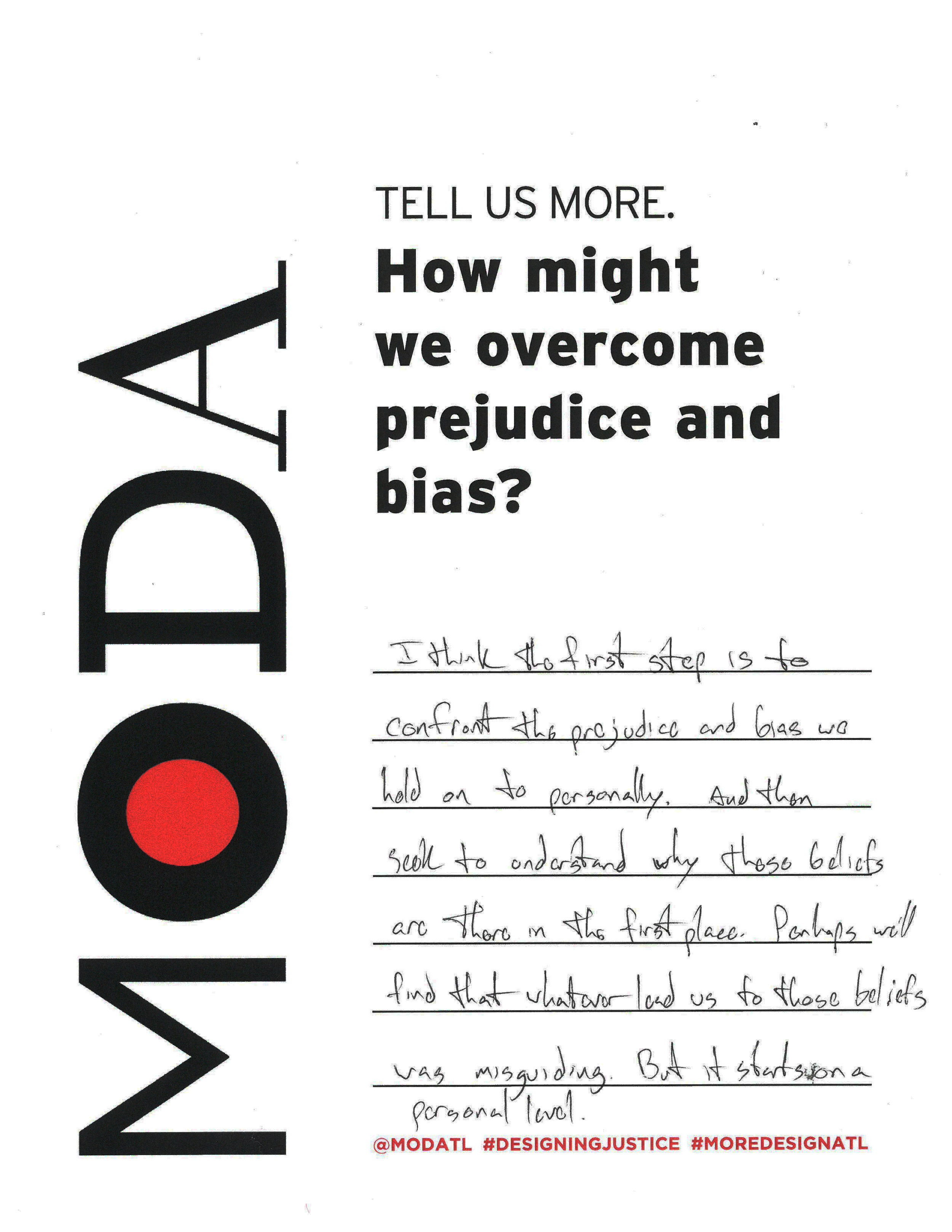

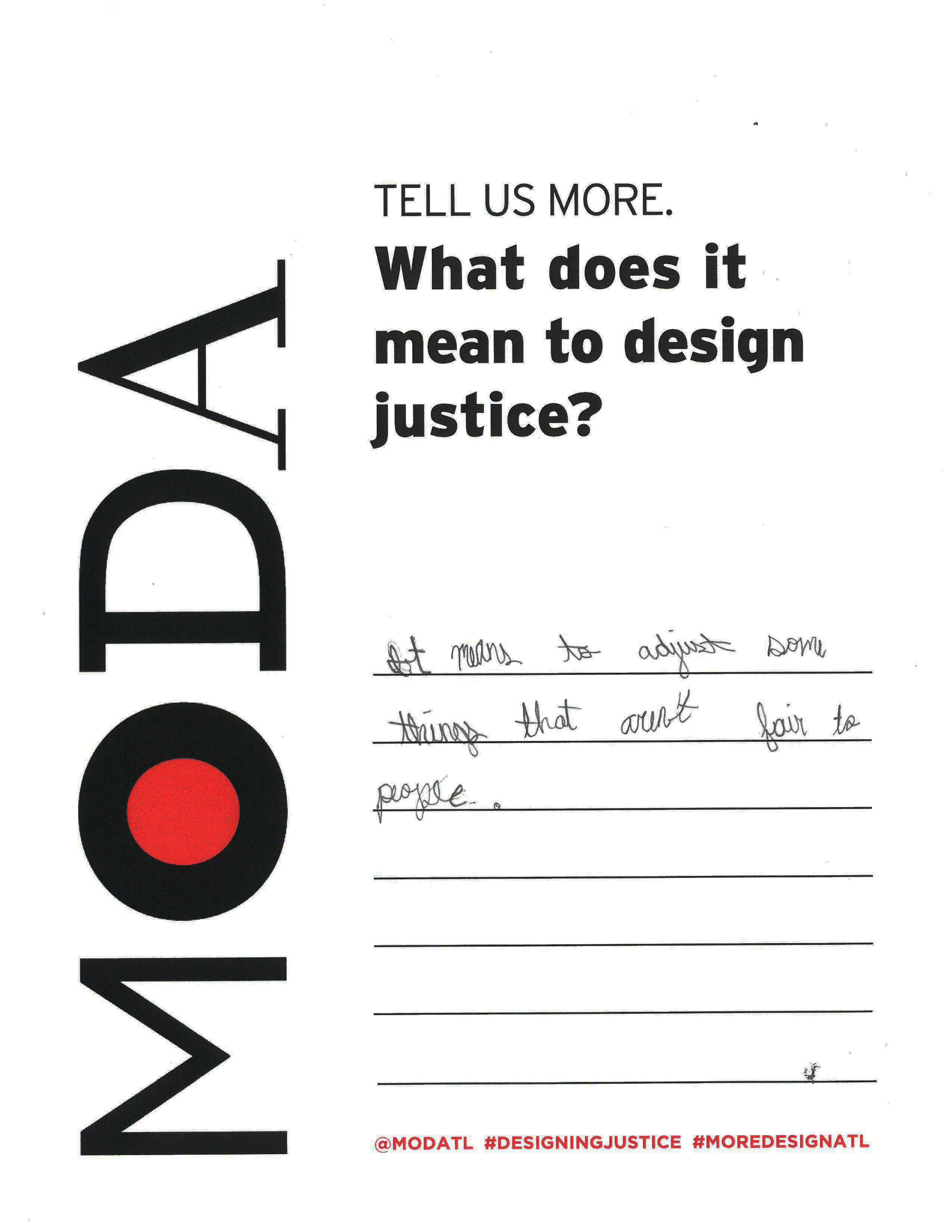
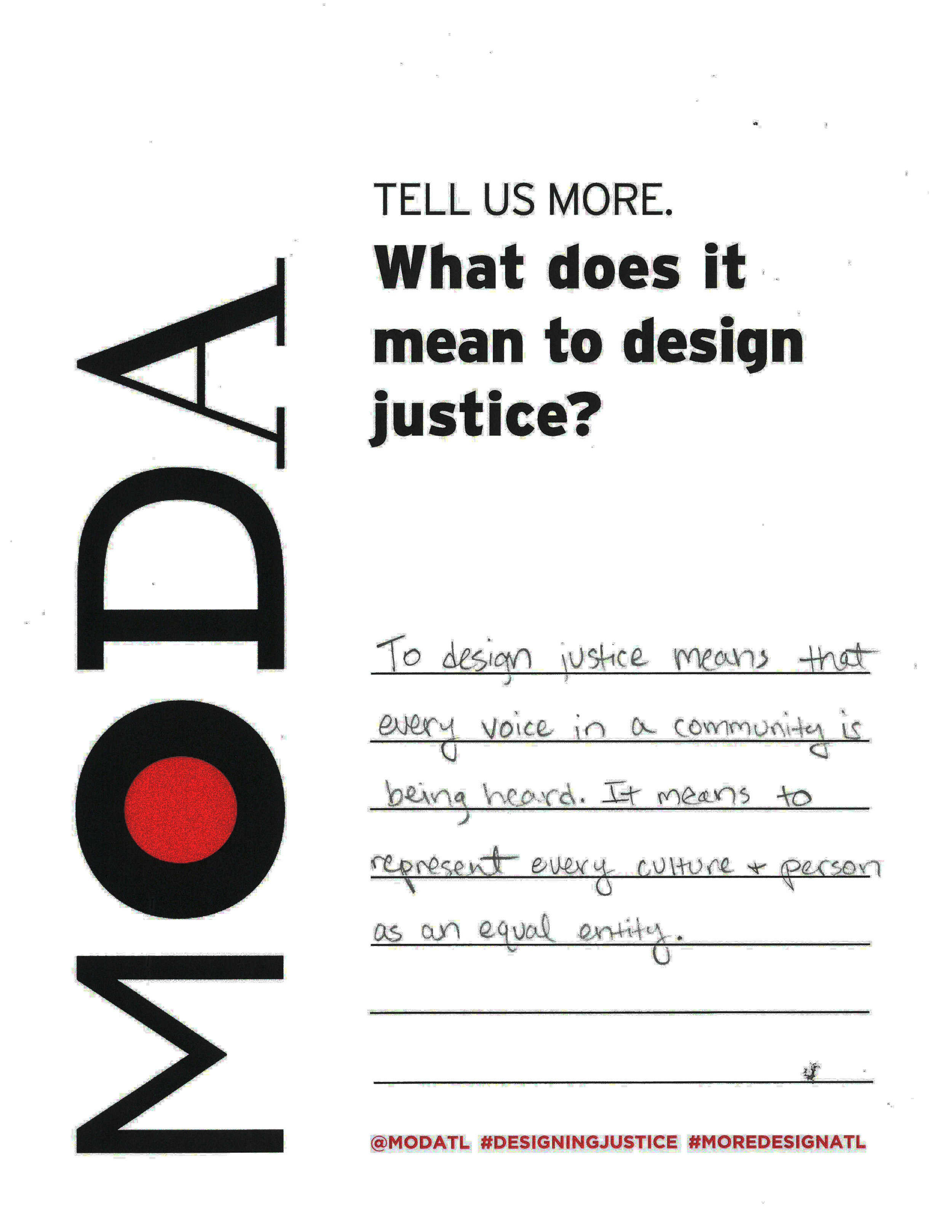
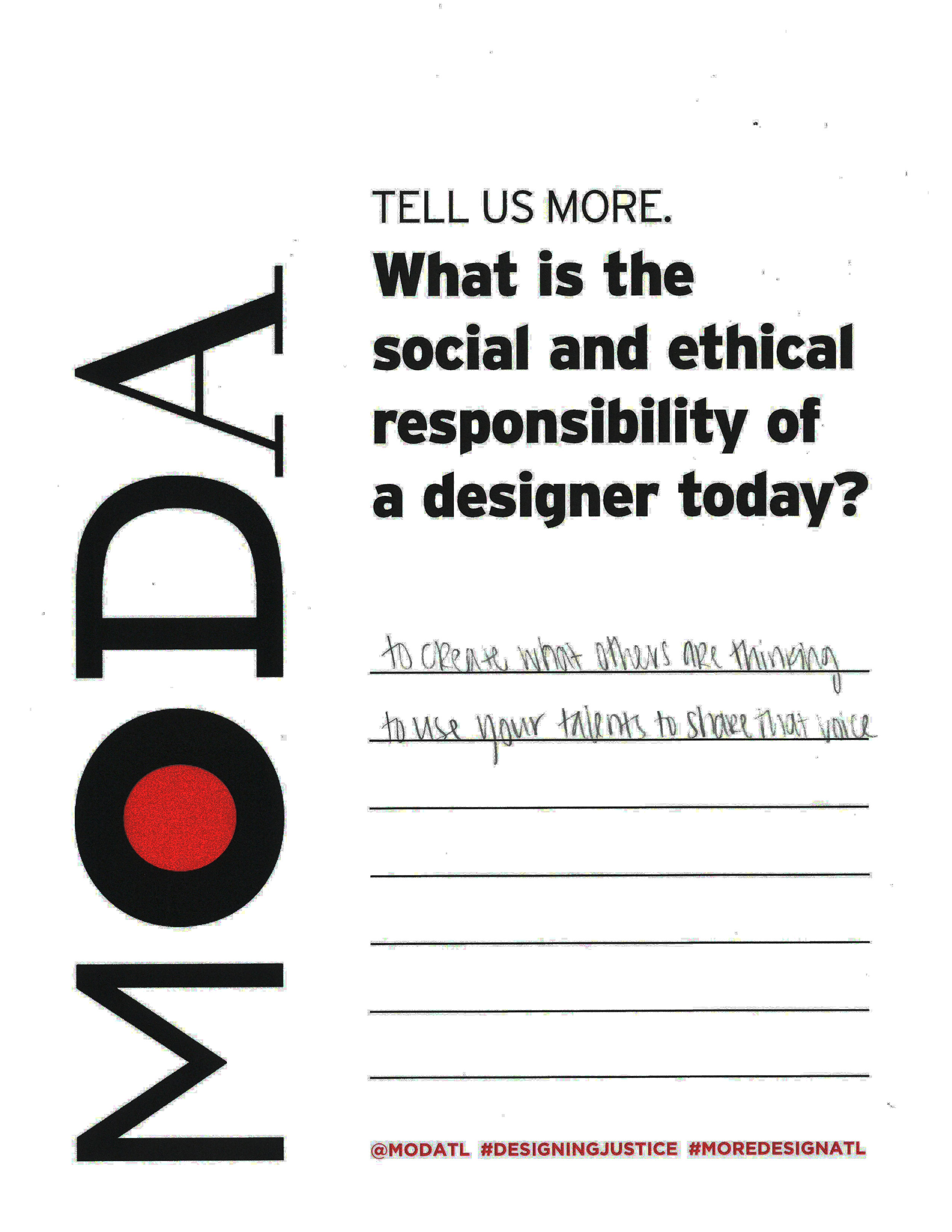

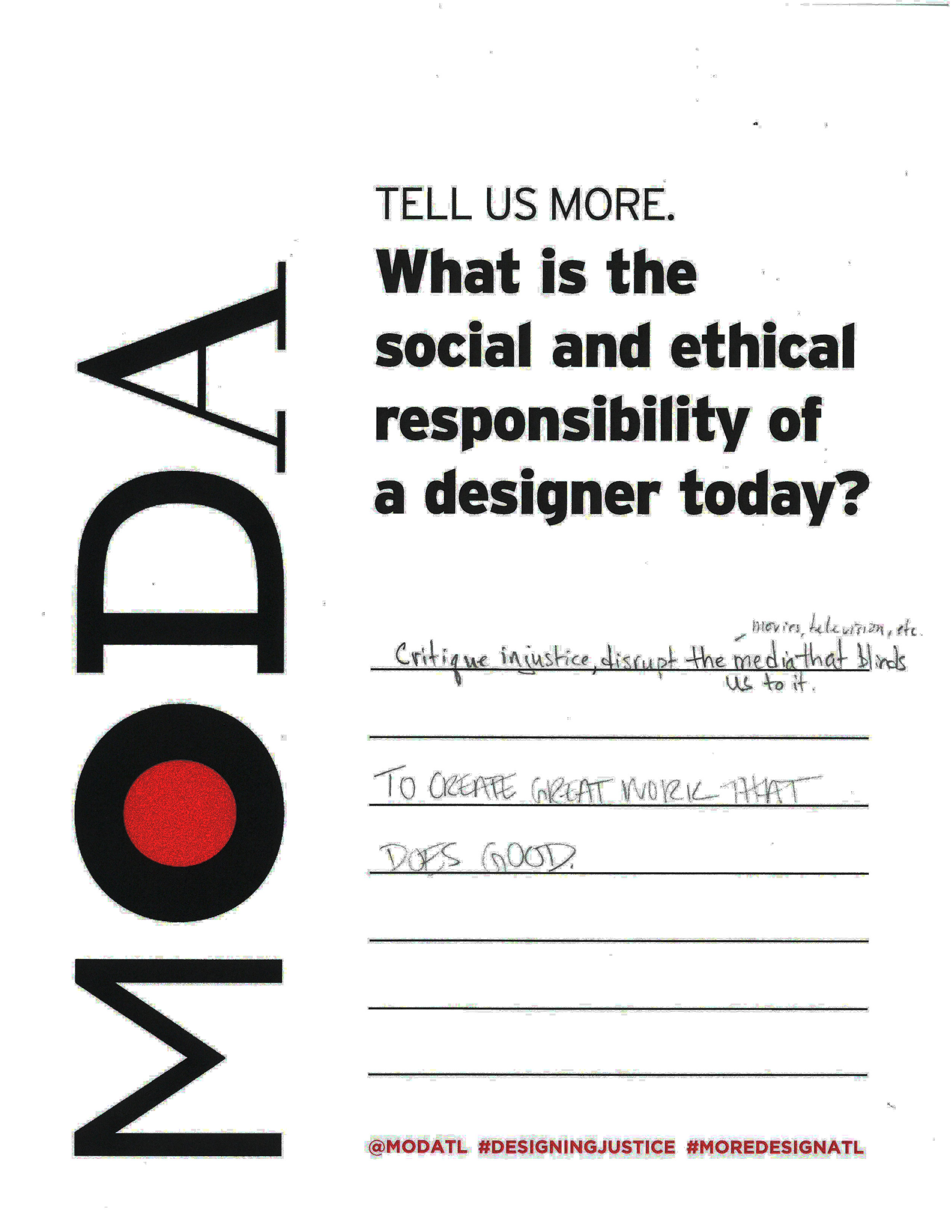
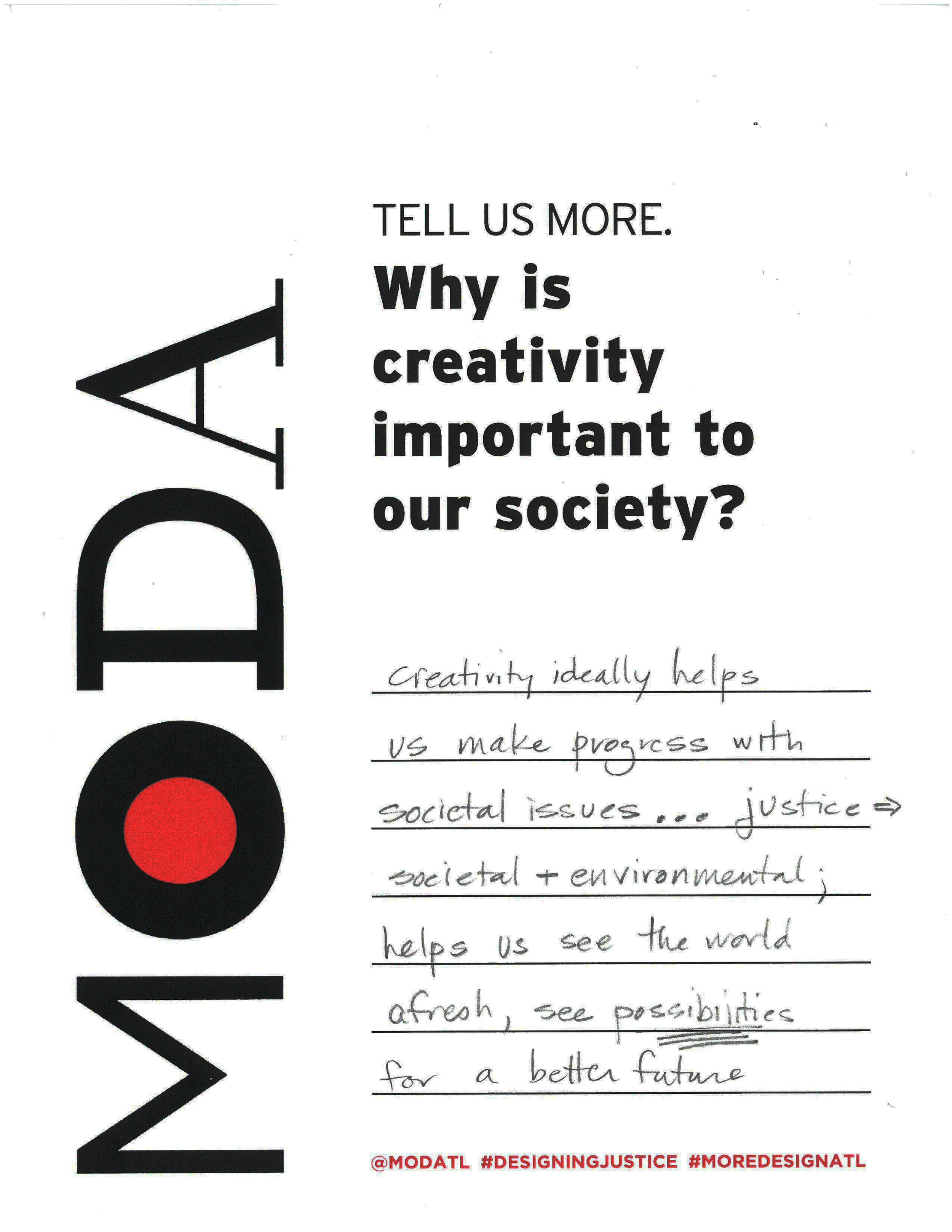
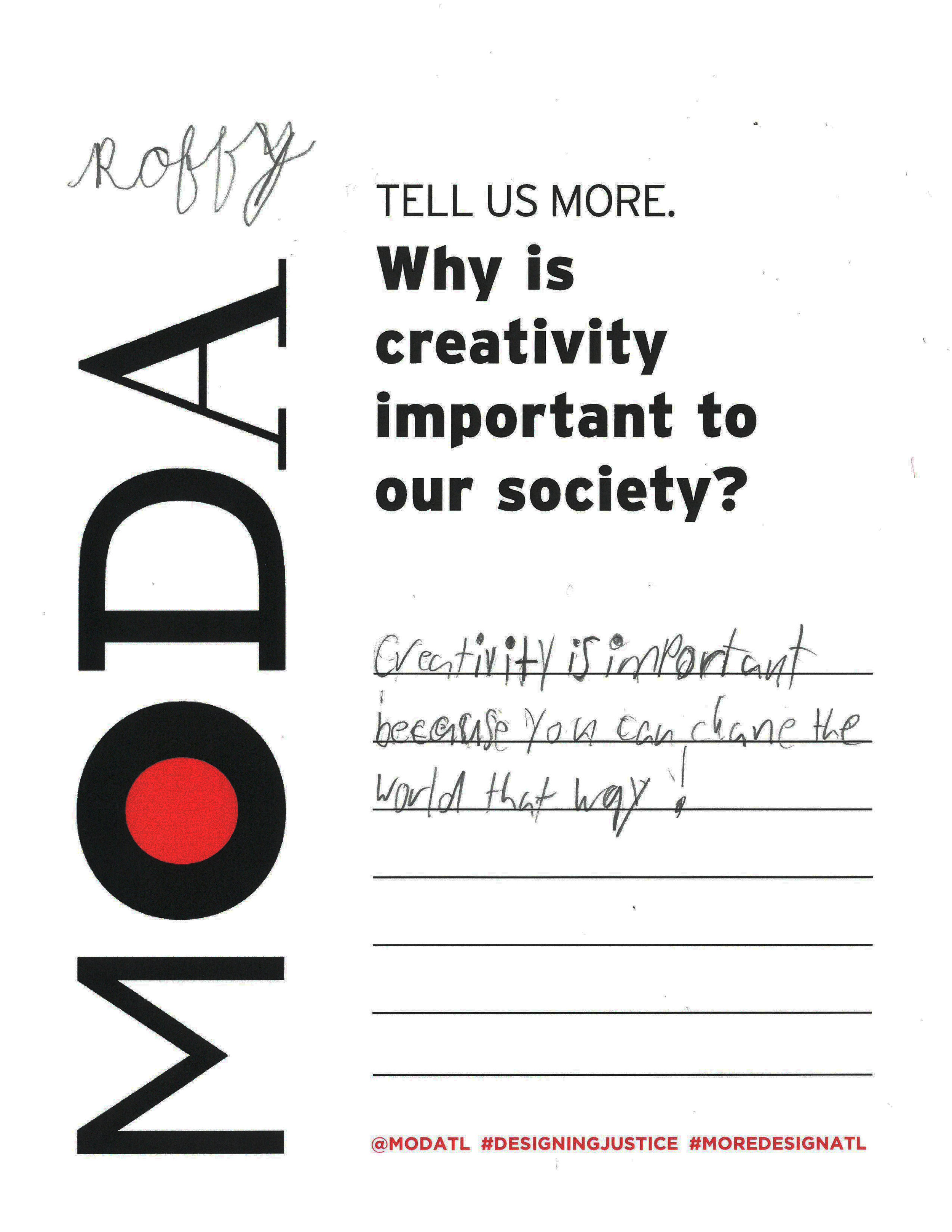
I Want to Tell My Story
The most popular of the three interactives was "I want to tell my story. Here's how social justice issues impact me," which was designed as a way for visitors to record their personal experiences with injustice and to compare their experiences to those of others.
In order to enable this autobiographical exercise , we printed social justice issues (LGBT rights, health care, racism, access to education, etc) on 27 discs and mounted them on the wall in a grid. Visitors tied colored twine around a disc that named an injustice they had experienced. Then, they continued to "weave their story" around other injustices that impacted their lives. We found that visitors loved doing this, but that they often waited for a moment of privacy in the gallery before embarking on the activity. We also found that the resulting "tapestry" woven by participants over the course of the months provoked a great deal of conversation as visitors searched for threads that echoed their own journey or tried to discern which of the issues had the most impact on others who had participated in the activity before them.
I Want to Understand
The third interactive activity was titled "I want to understand. Greater than, less than, or equal?" In order to create this activity, we installed book lips on the wall and printed social justice issues such as corruption, genocide, famine, poverty, education, etc on rectangular pieces of gator board. We also printed gator board squares with the mathematical symbols for greater than (>), less than (<), and equals (=).
Participants were invited to rearrange the social justice issues and mathematical symbols on the book lips in order to create statements such as "IMMIGRATION > WAR < RACISM." Visitors were free to interpret the meanings of "greater than," "less than," and "equals" as they liked.
This activity was both challenging and popular. Discussions broke out and patrons acknowledged that the task made them feel a bit uncomfortableVisitors asked if we would be willing to add plus (+) and minus (-) signs to the mix and we considered the merits of doing so, ultimately deciding that pluses and minuses would allow for the creation of equations that would remove some of the uncertainty that we had deliberately designed into the activity. Our intention was to create an environment in which visitors grappled with the complexity of deciding which issues took priority over others.
Over and over we heard from MODA visitors that these interactive activities had great impact and enhanced their visits. We gathered feedback about them in a way that I'll share in an upcoming post. But, the three activities discussed here weren't the only ways that we involved visitors in Luba Lukova: Designing Justice. Read about Make a Poster. Make a Difference. here.
Luba Lukova: Designing Justice was curated by Luba Lukova. Exhibition design by Susan Sanders. Interactive design by Susan Sanders and Laura Flusche.

